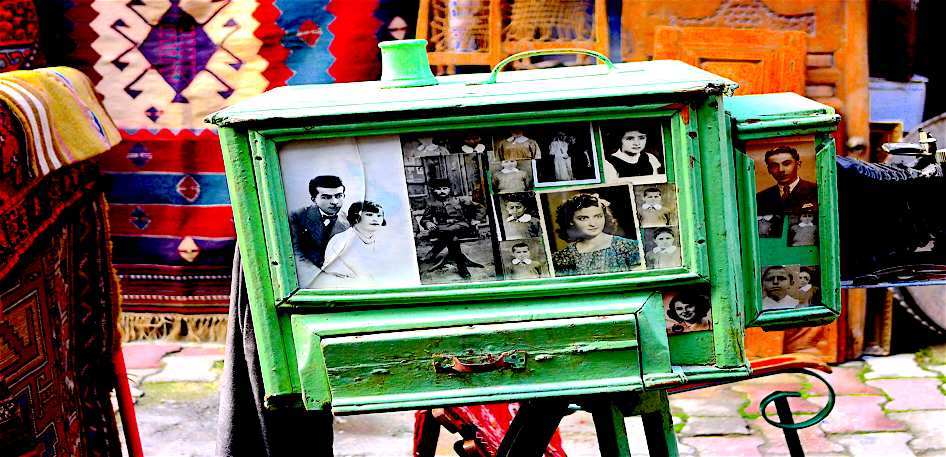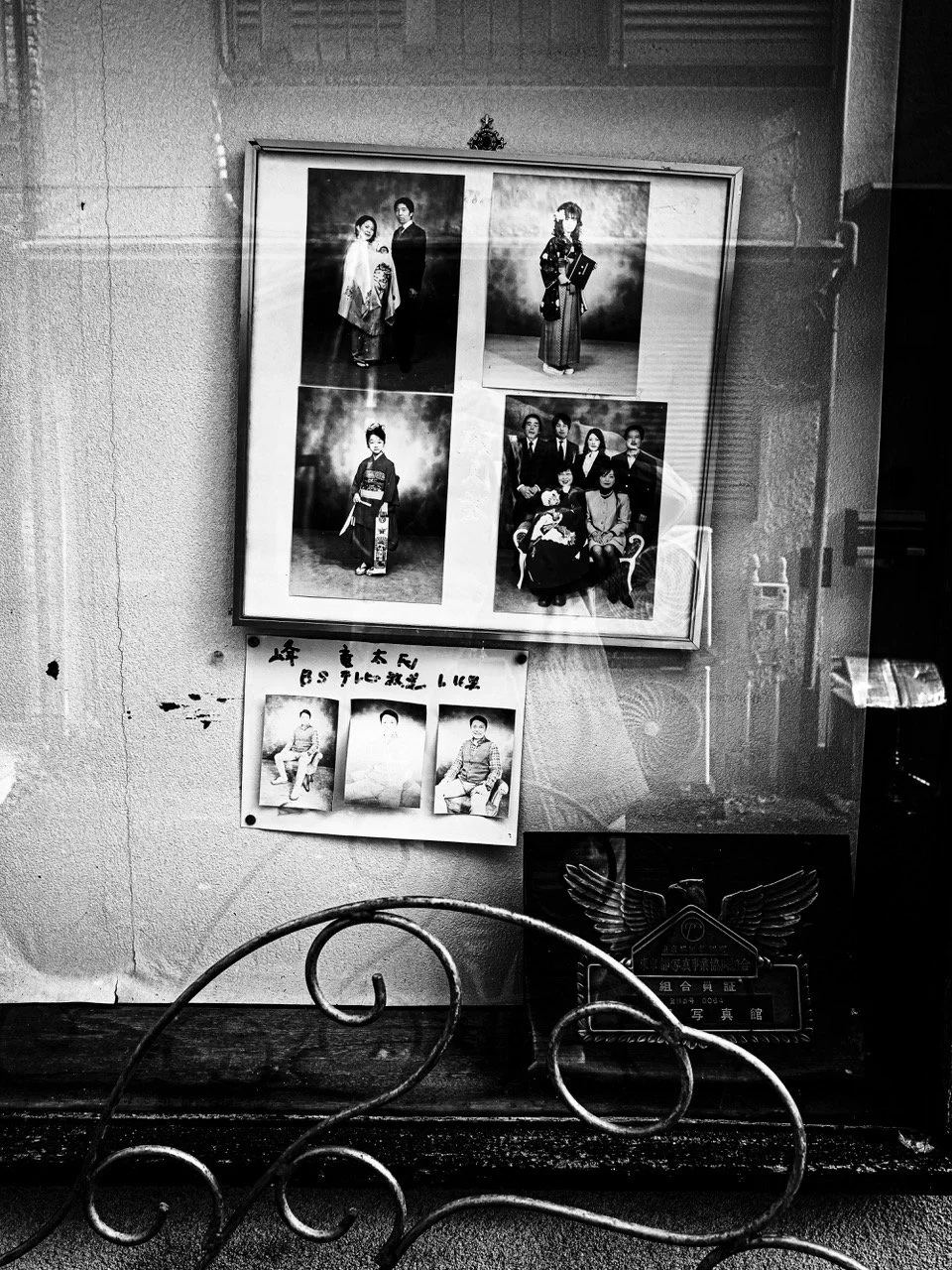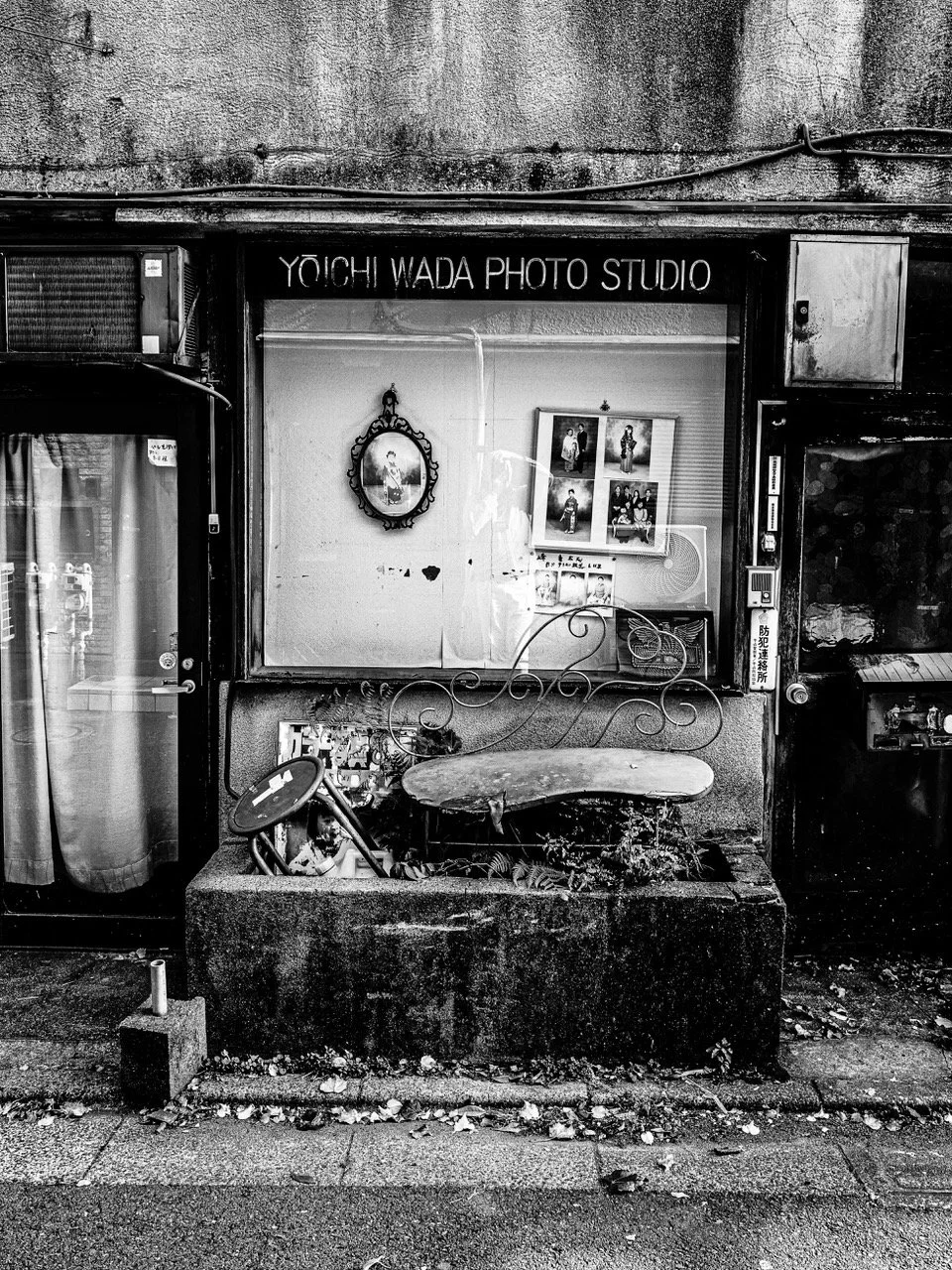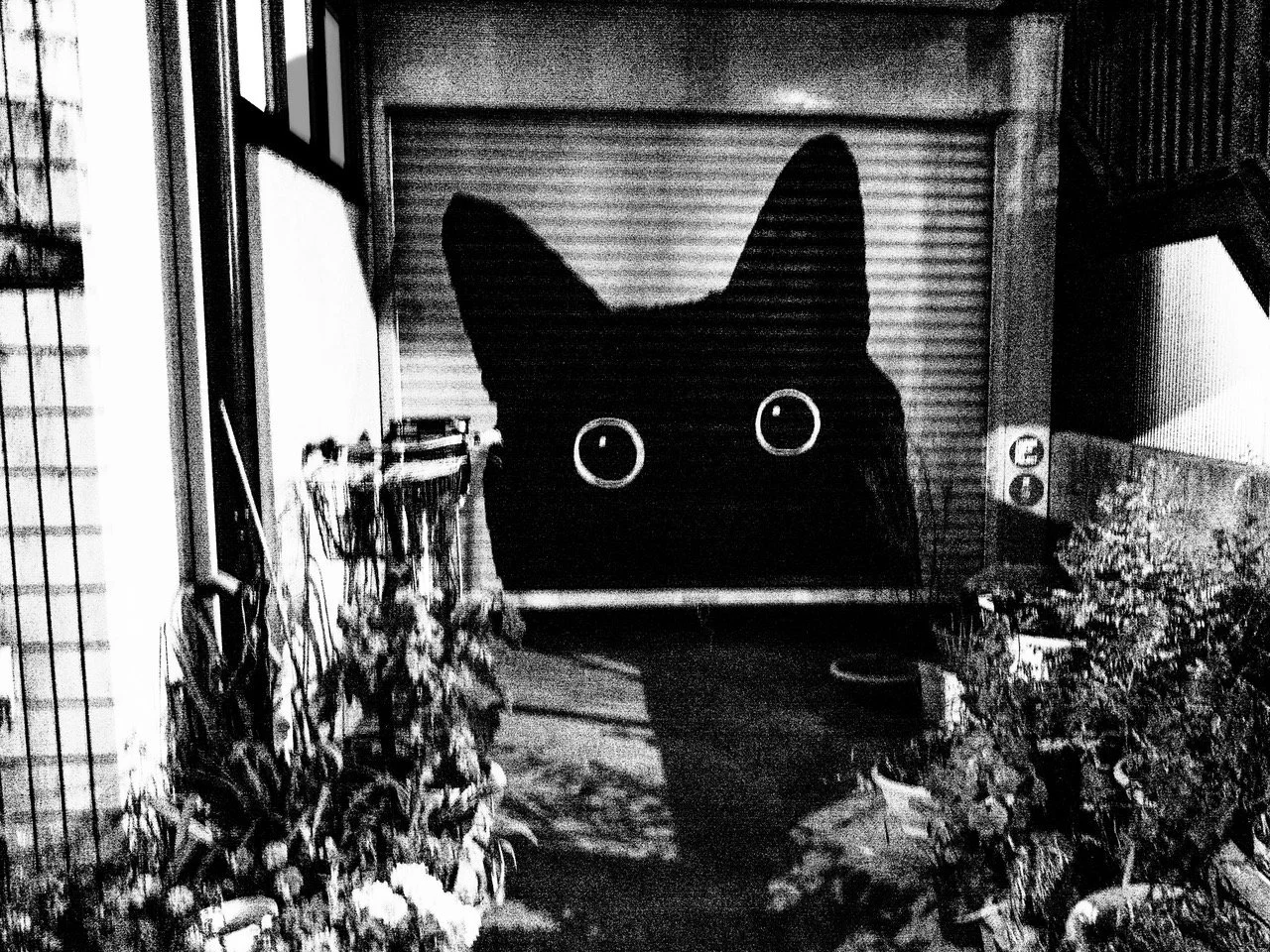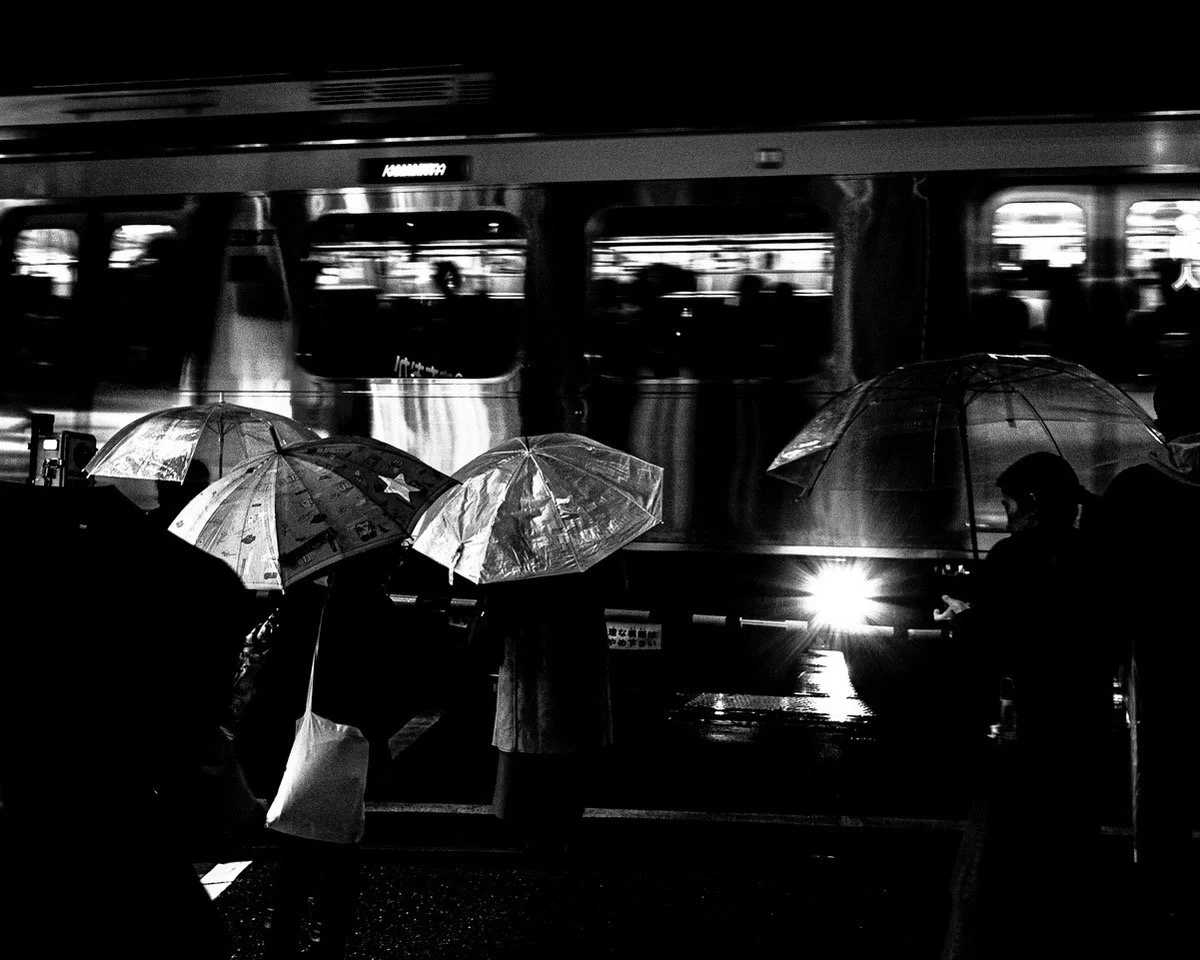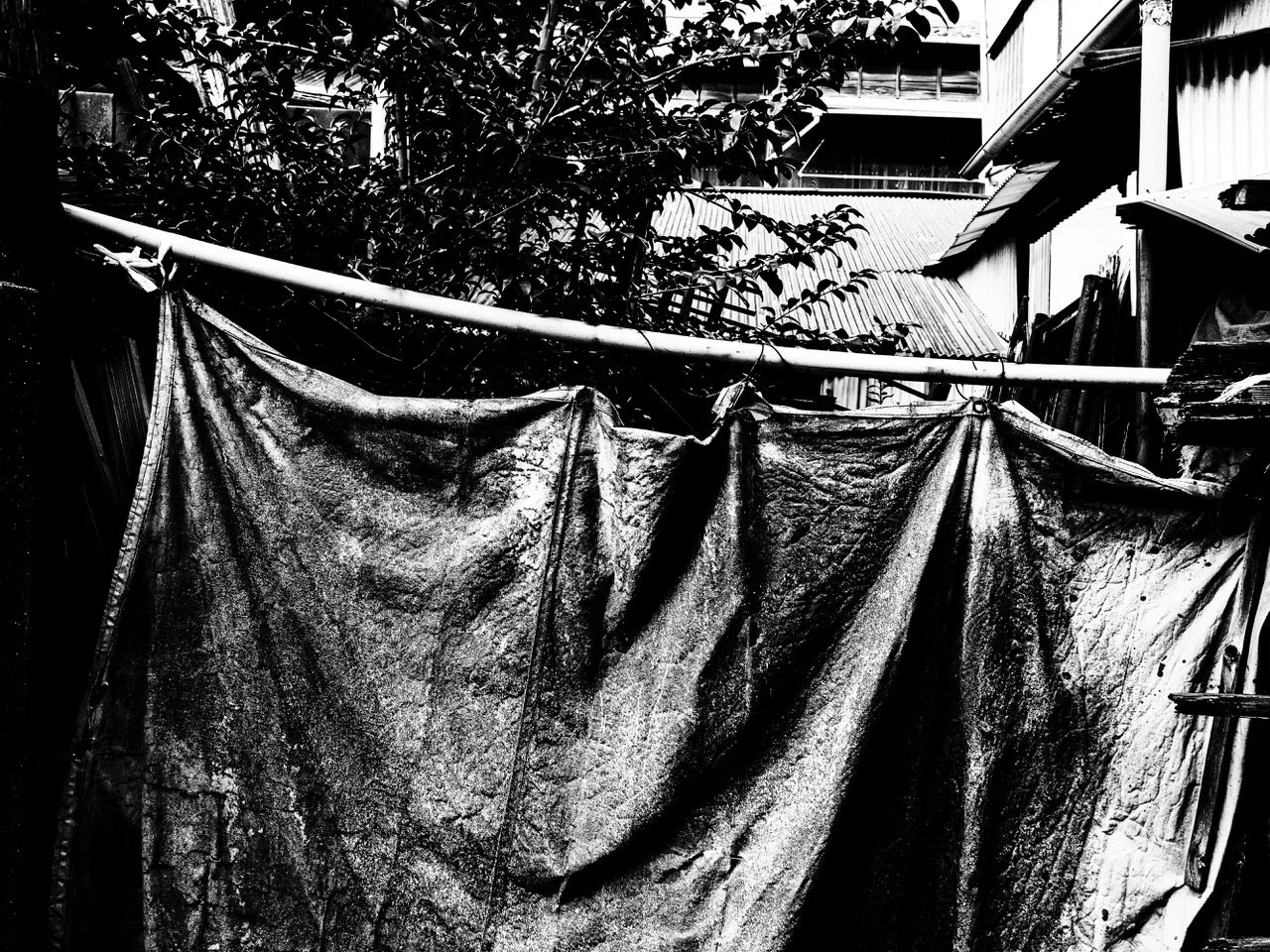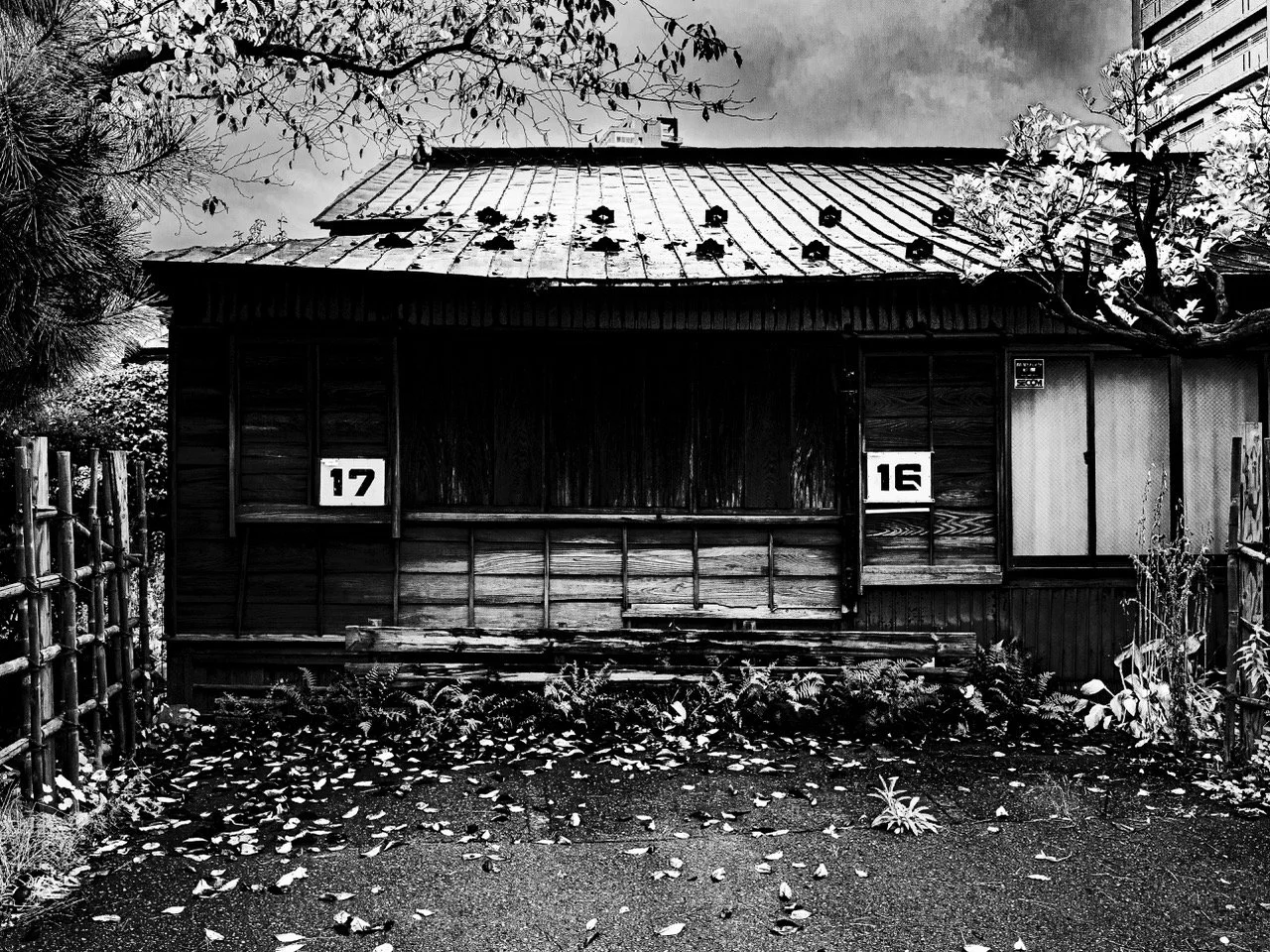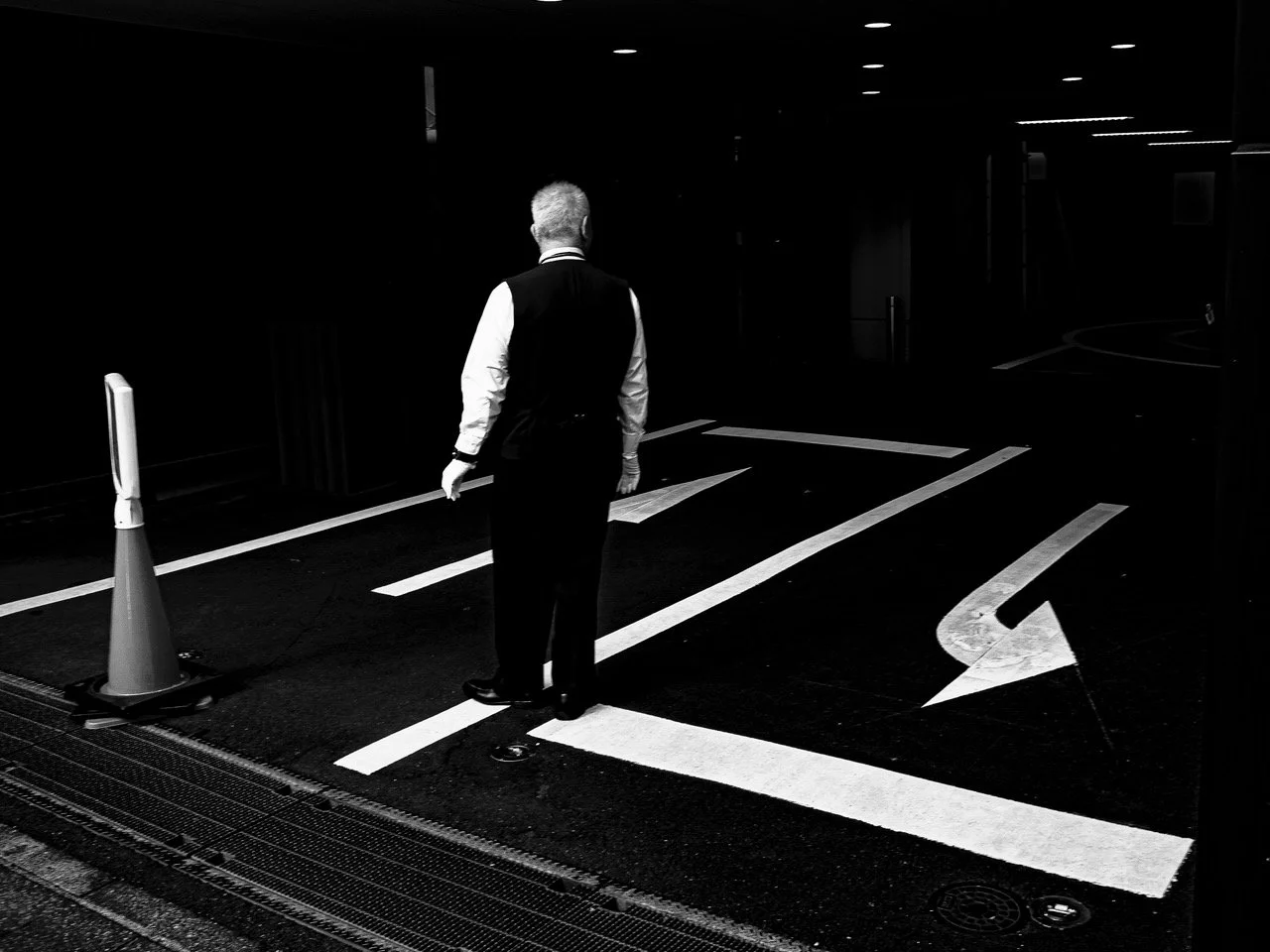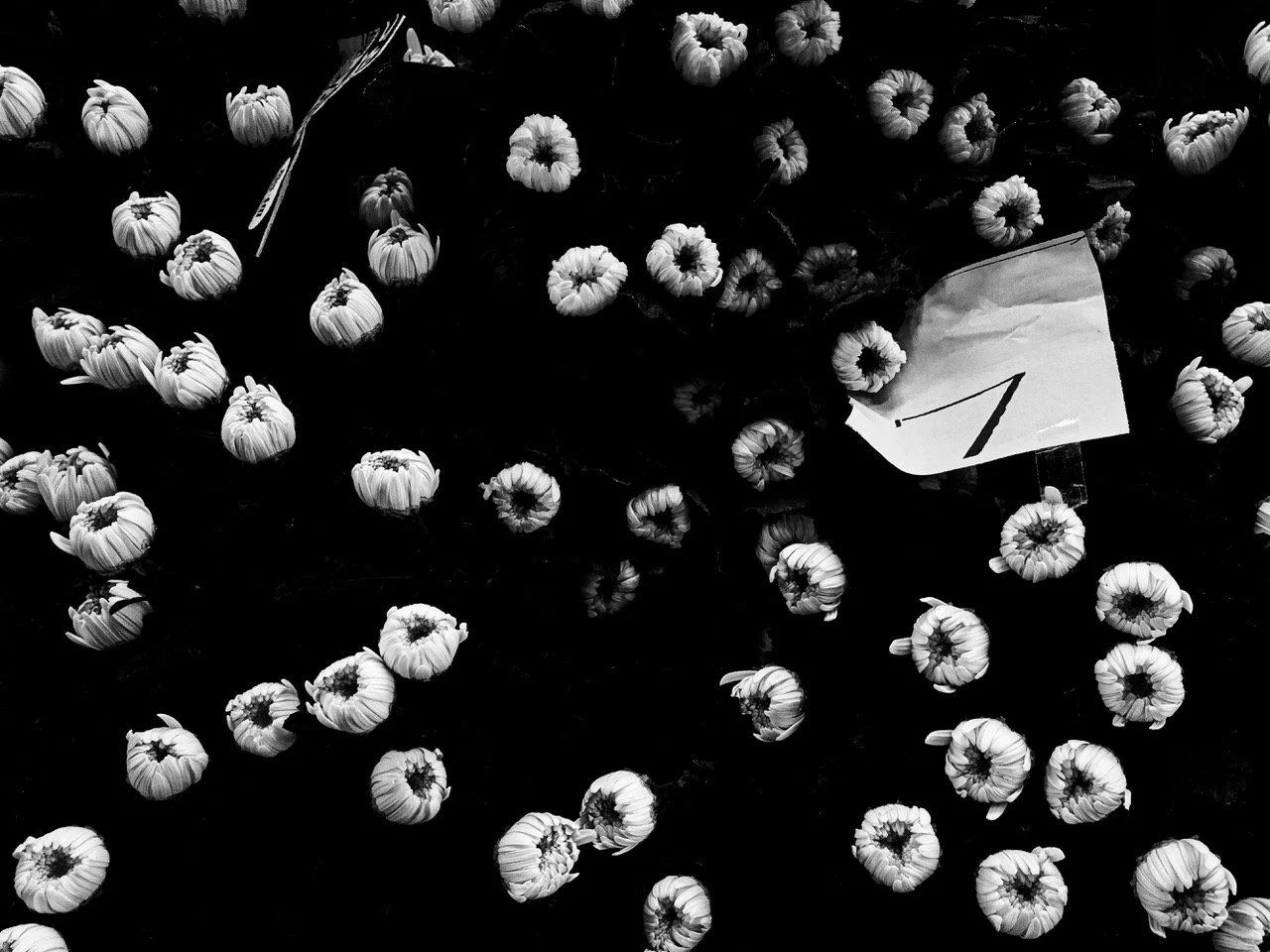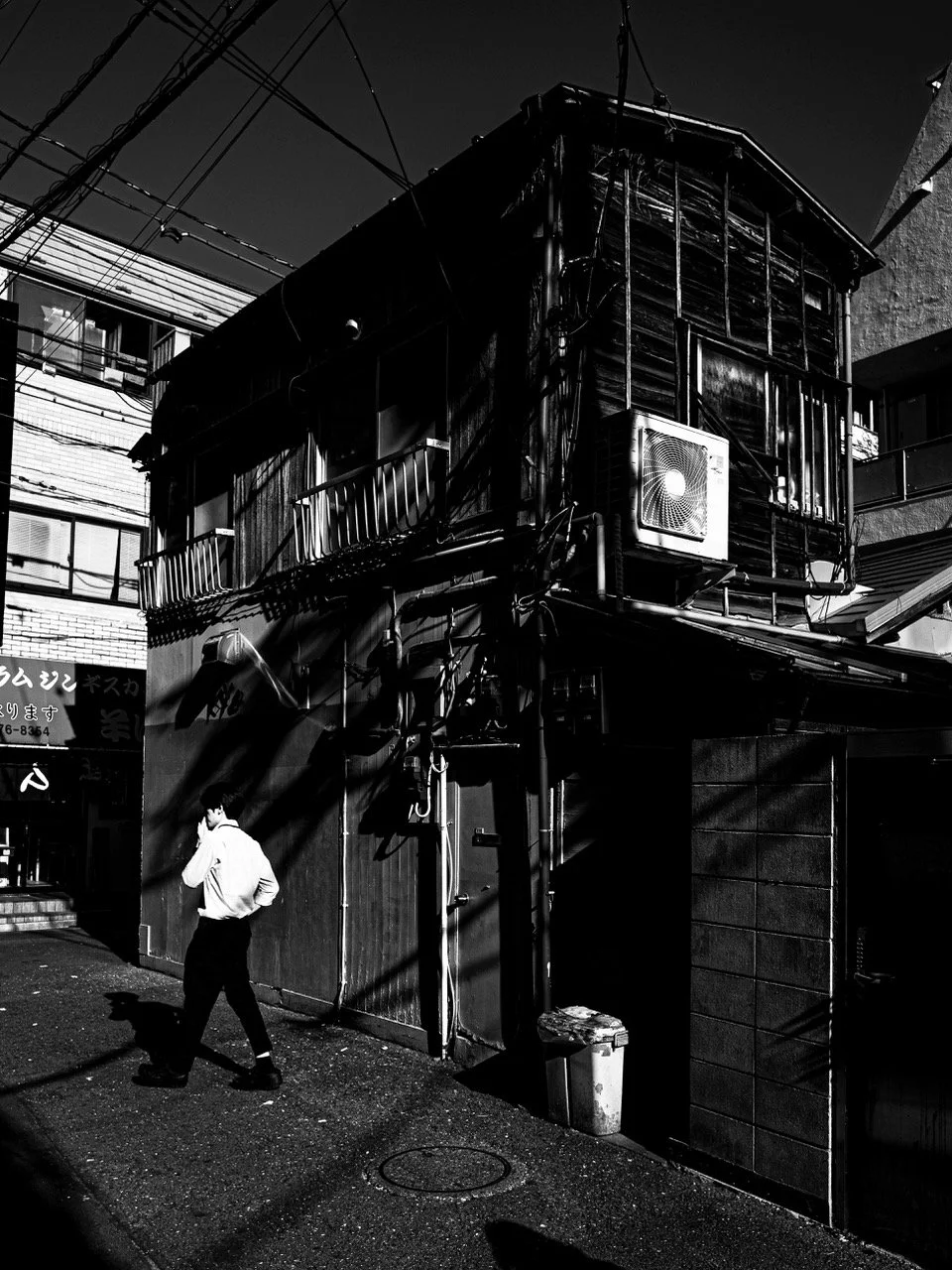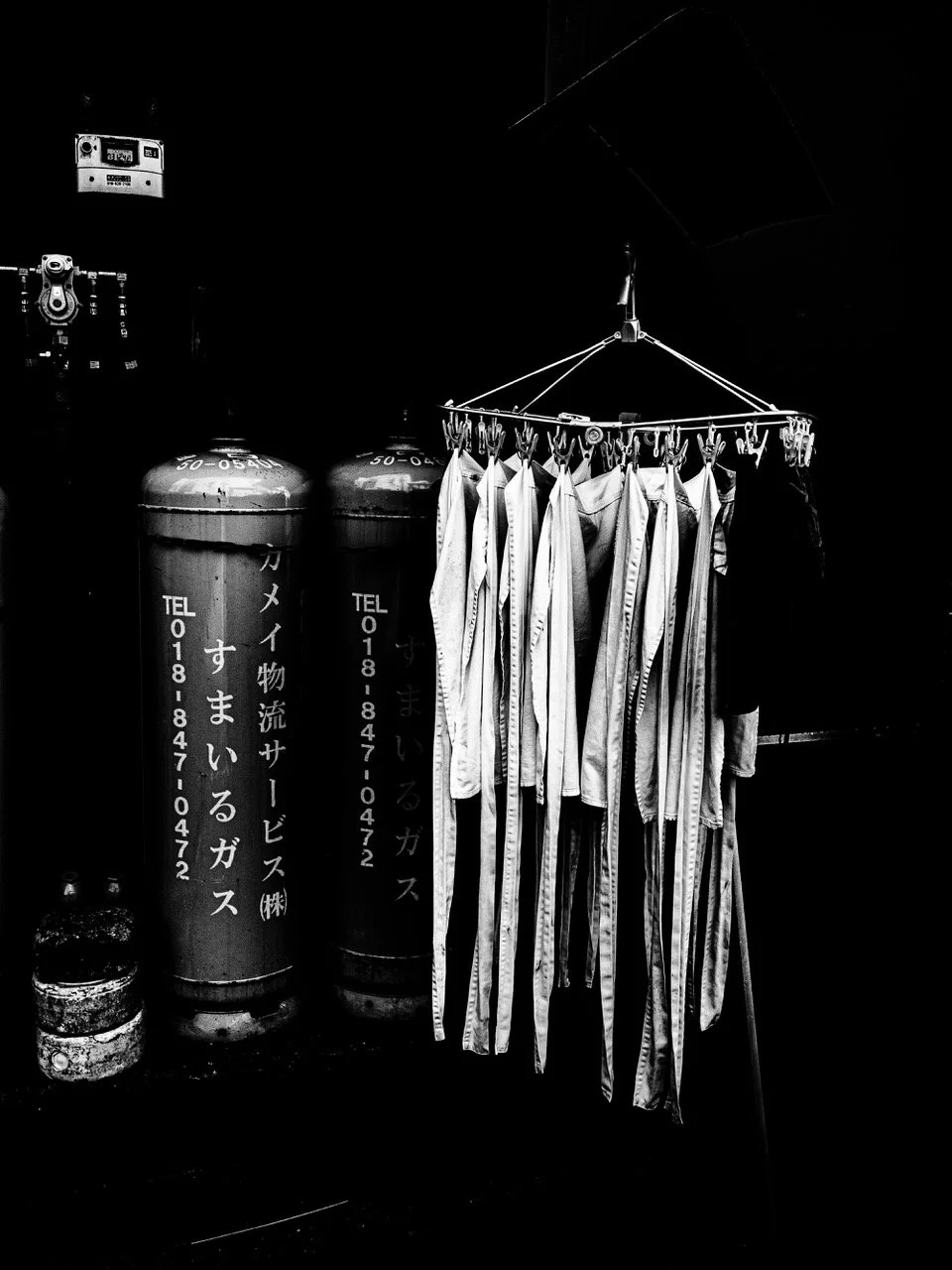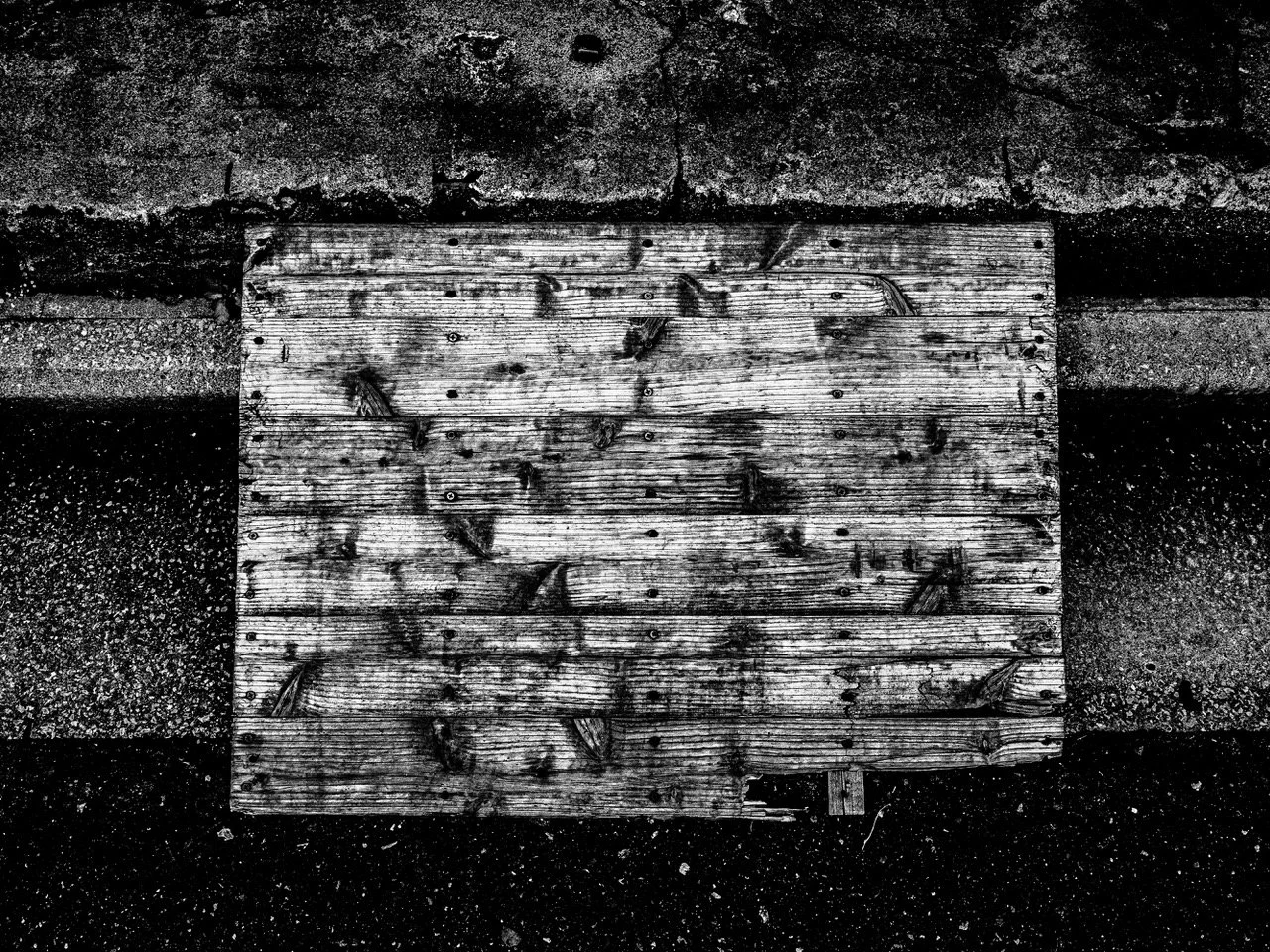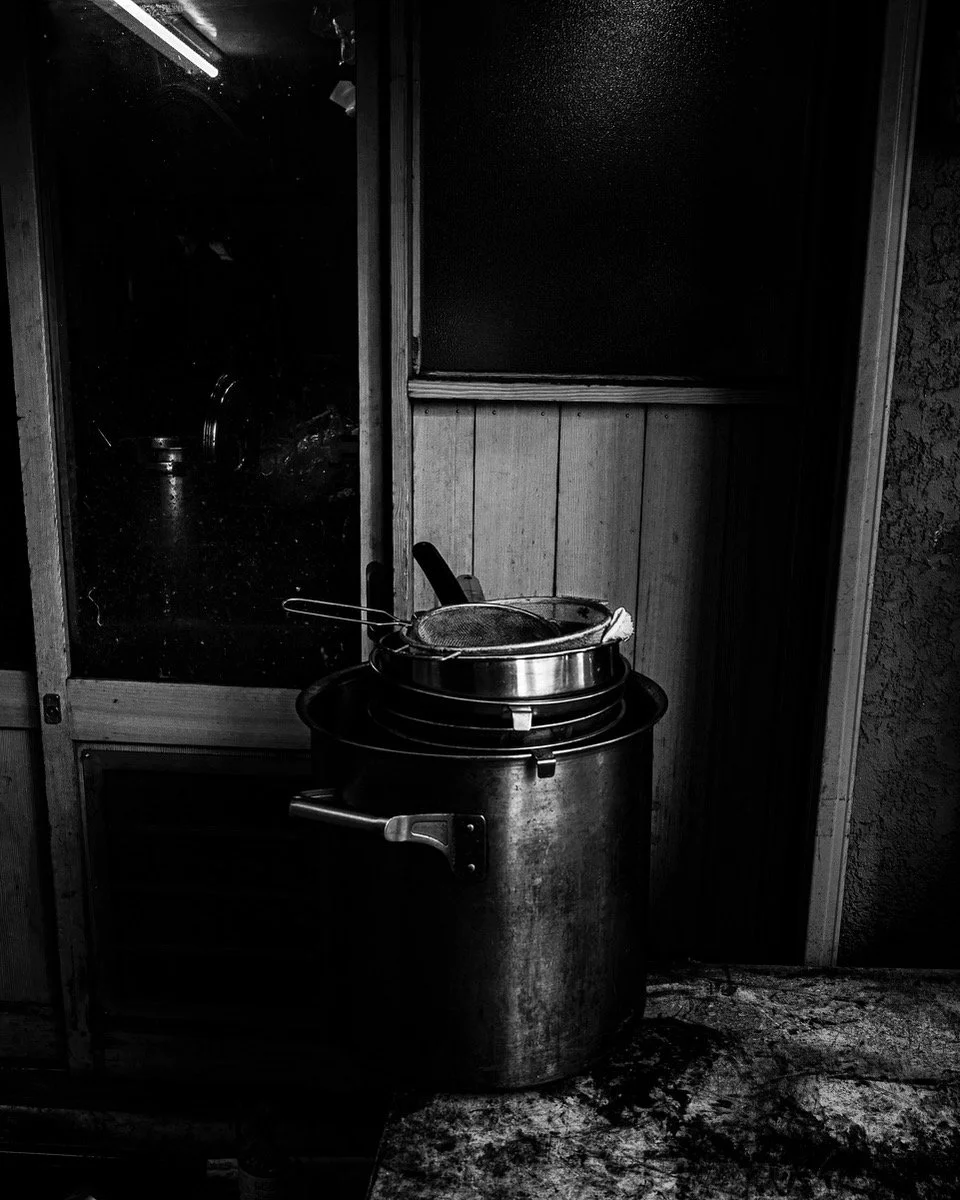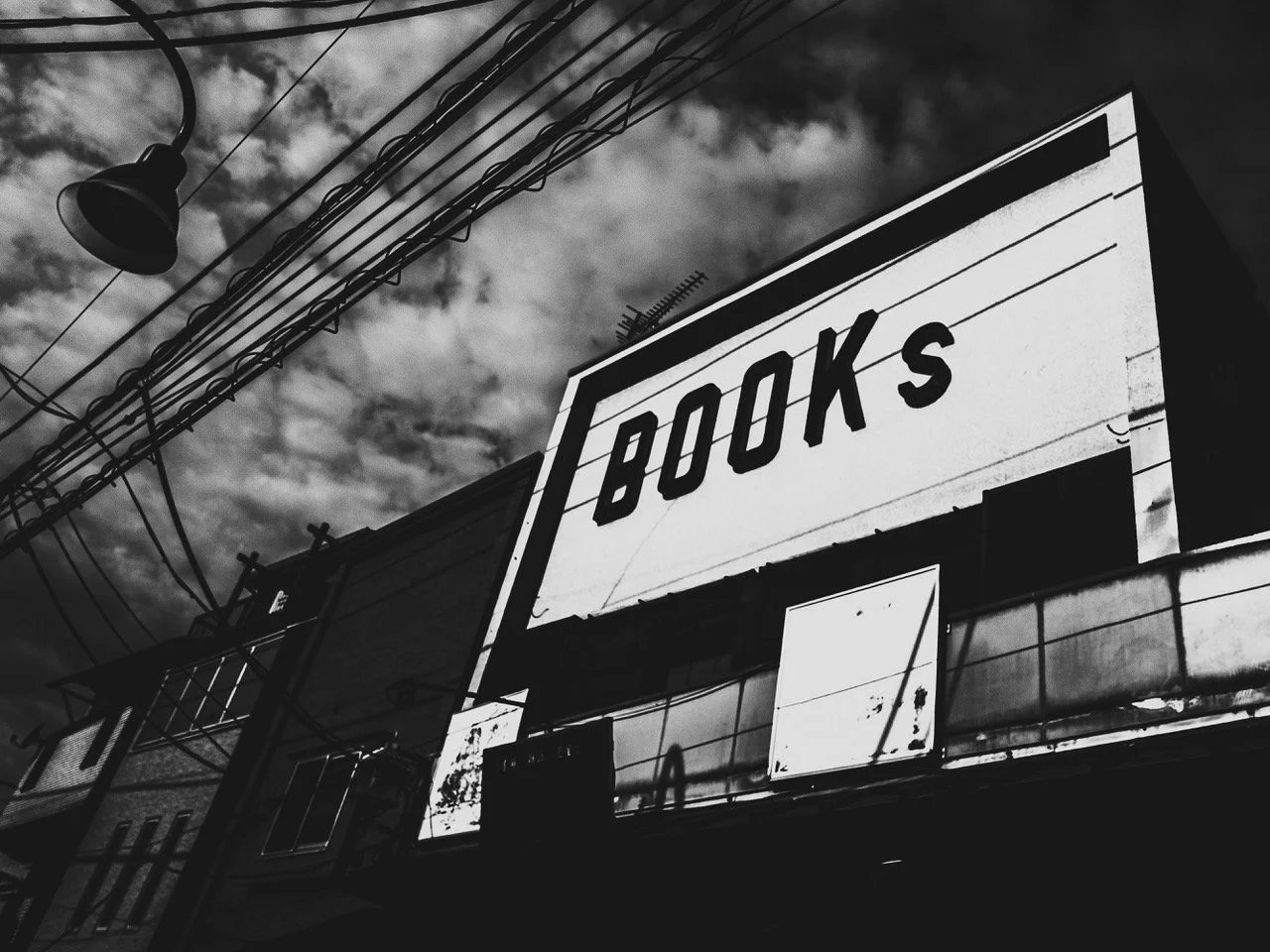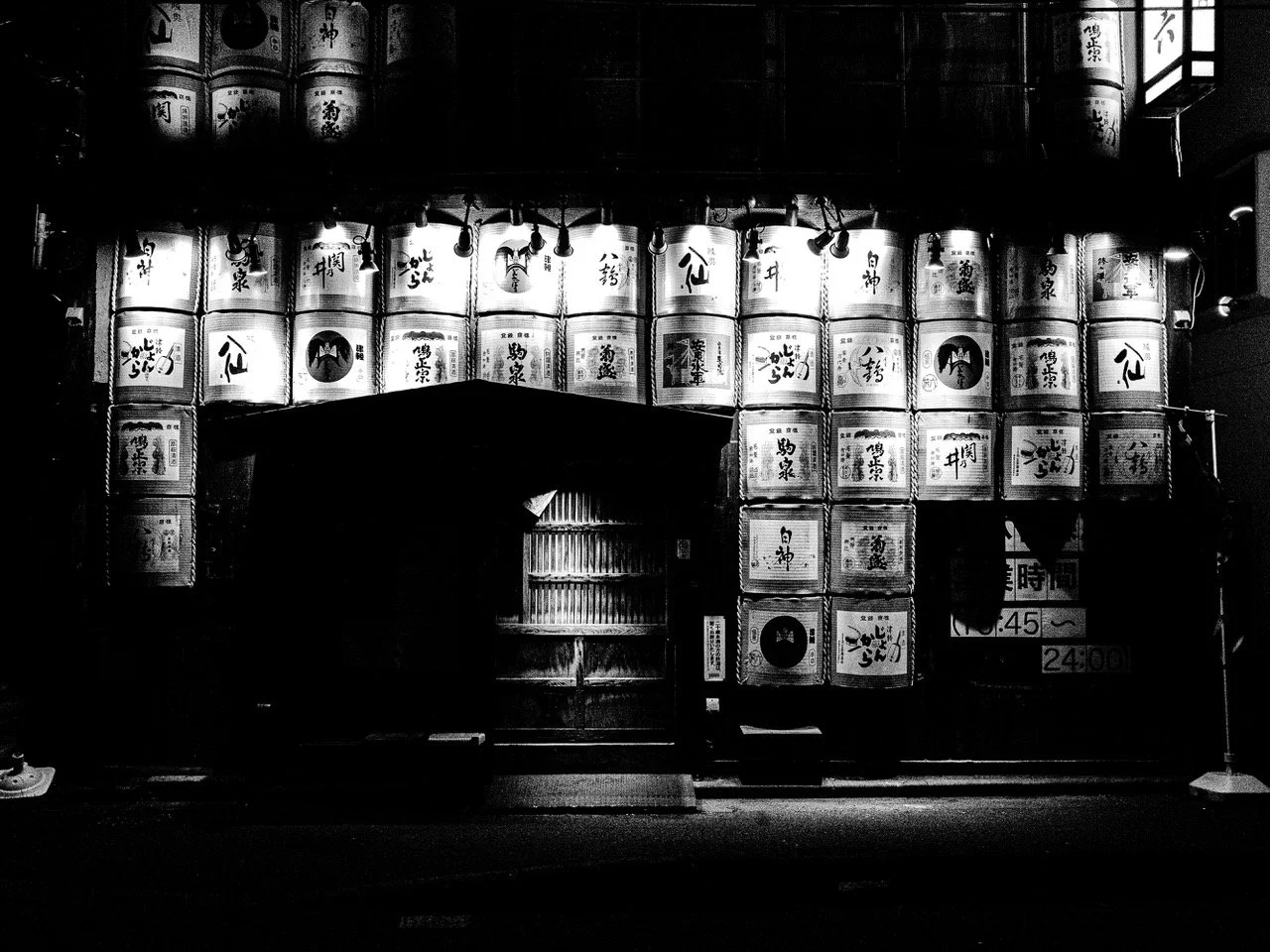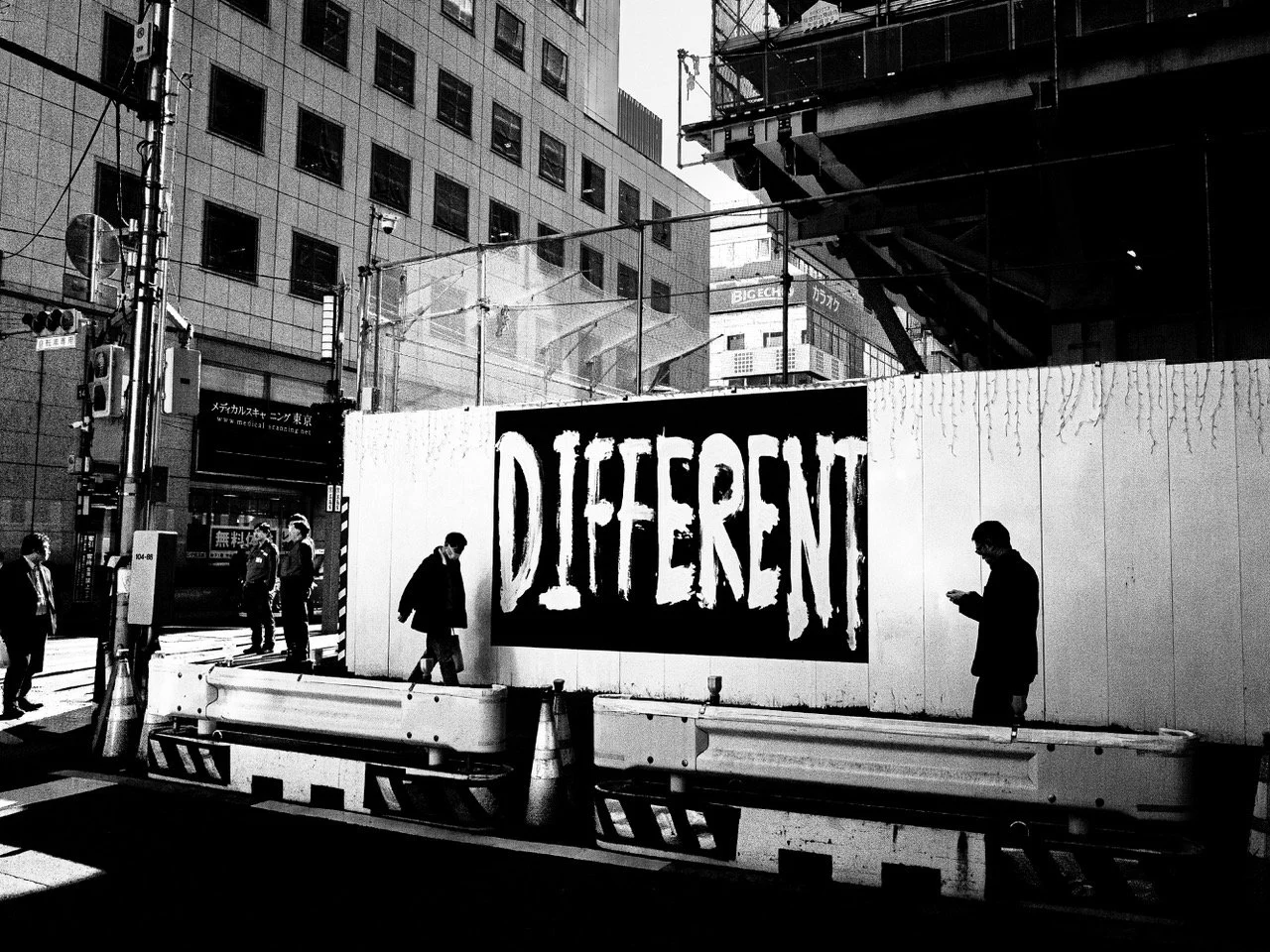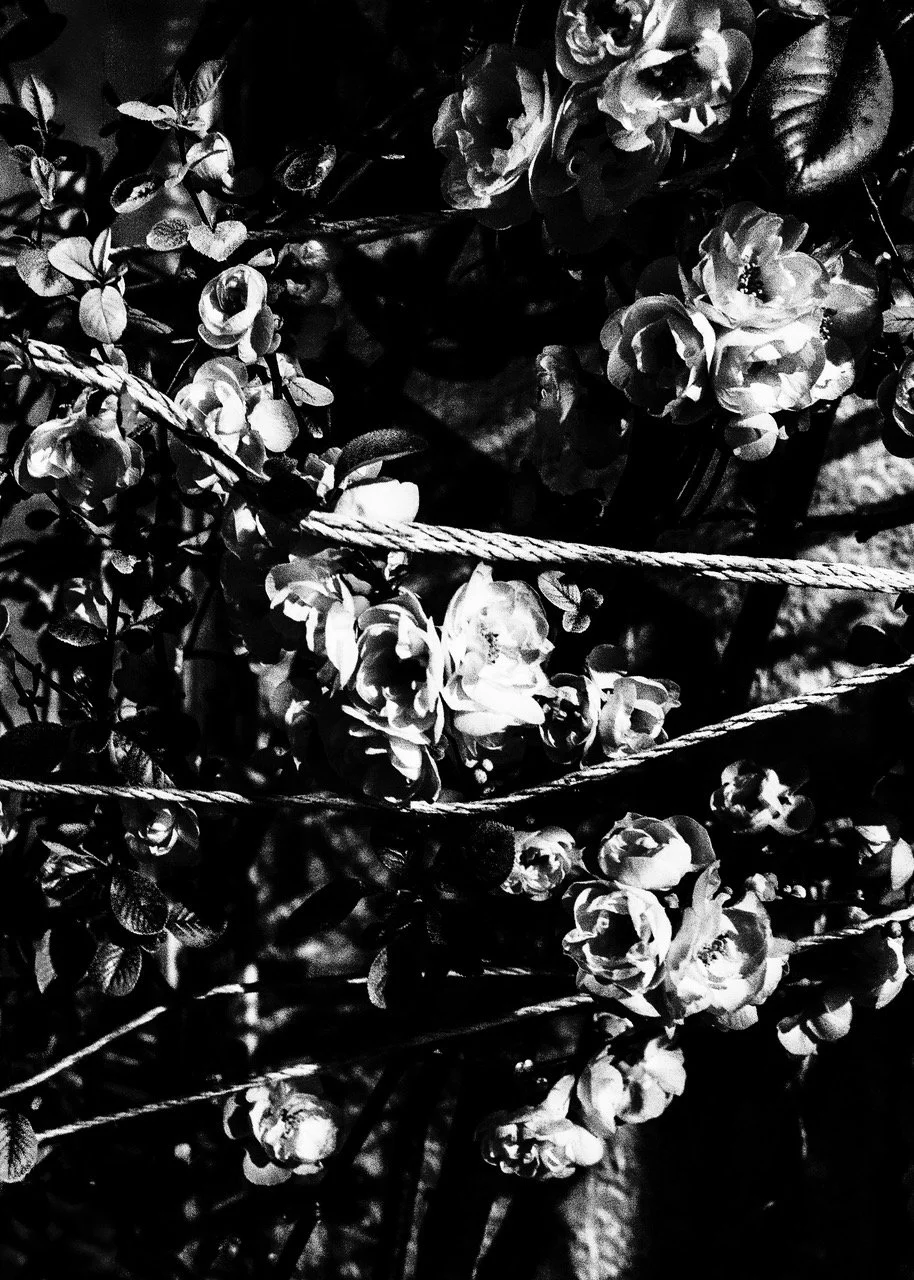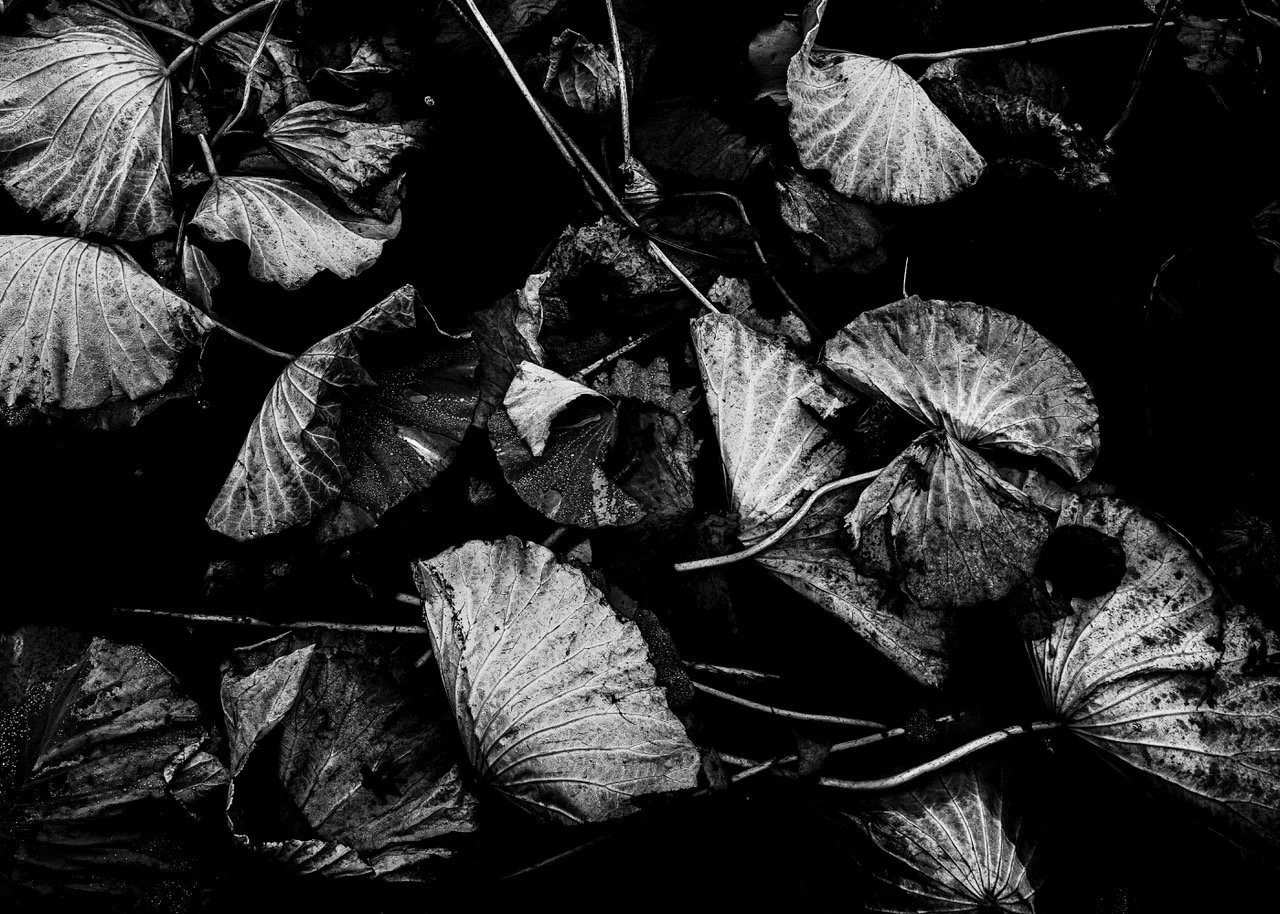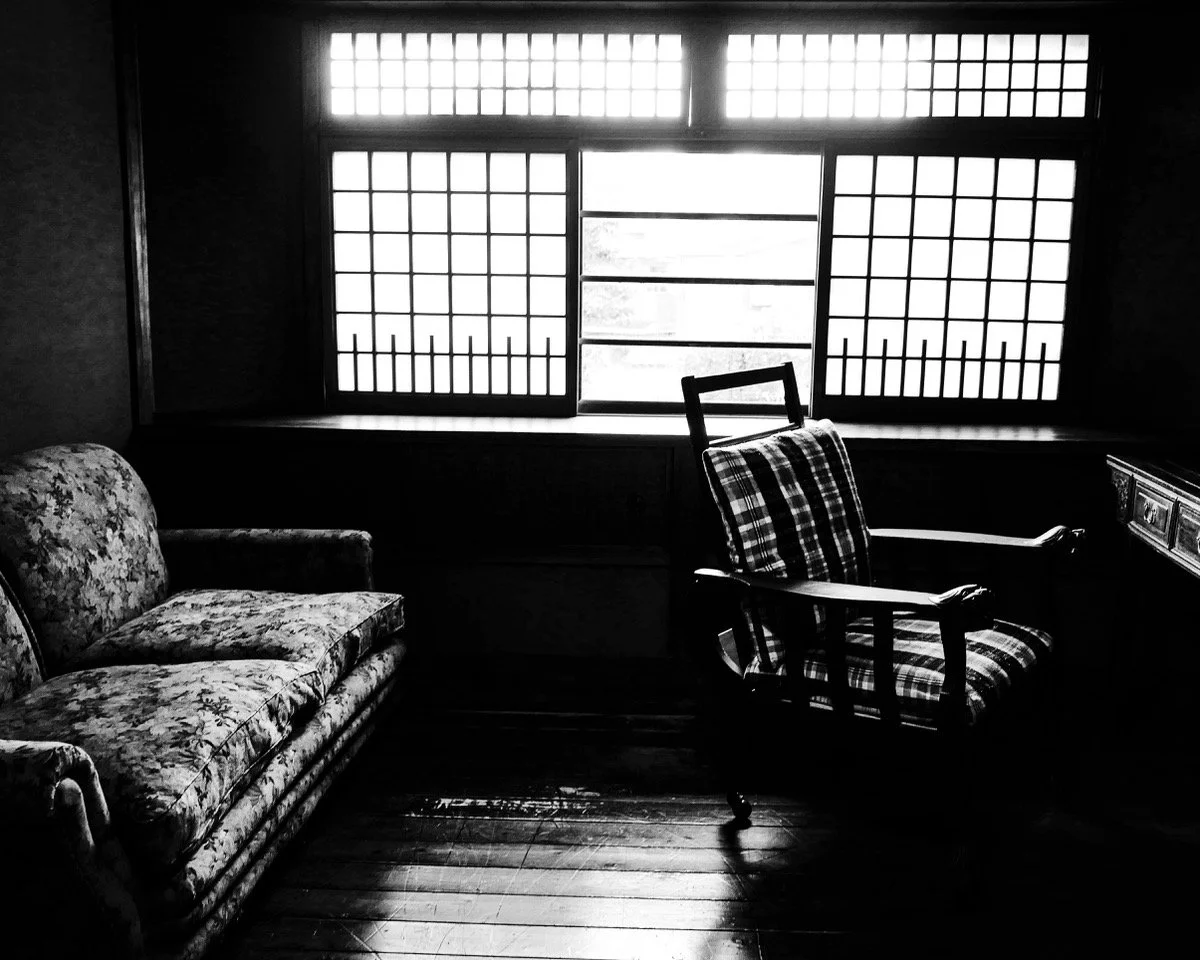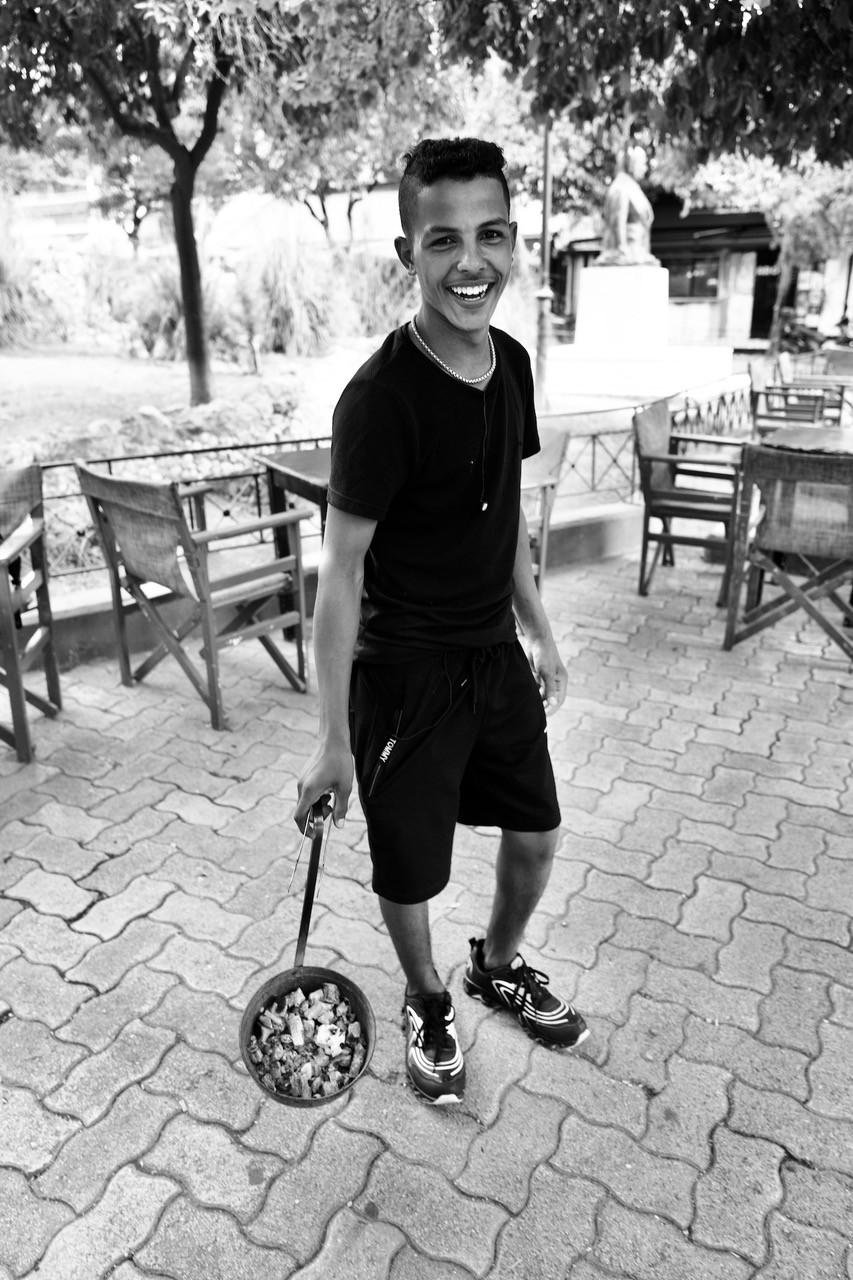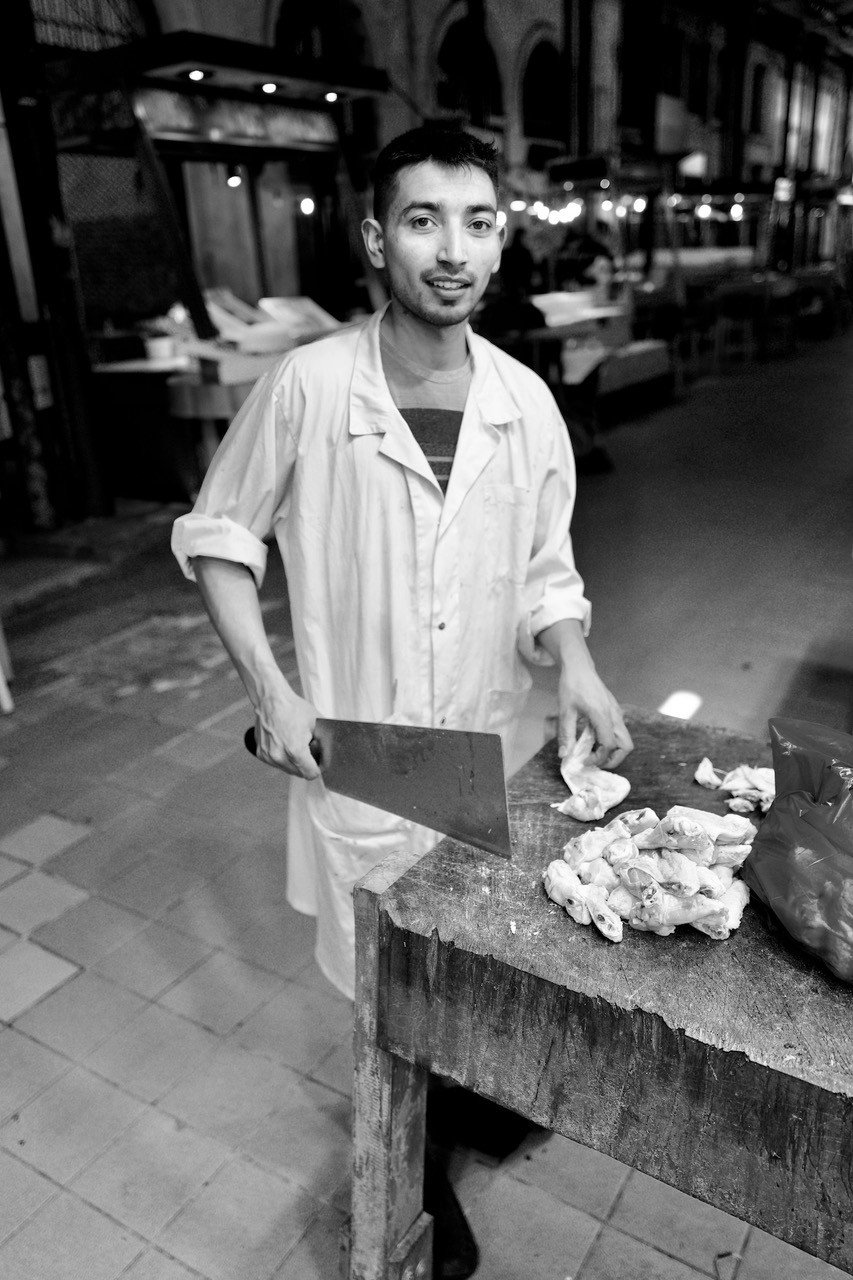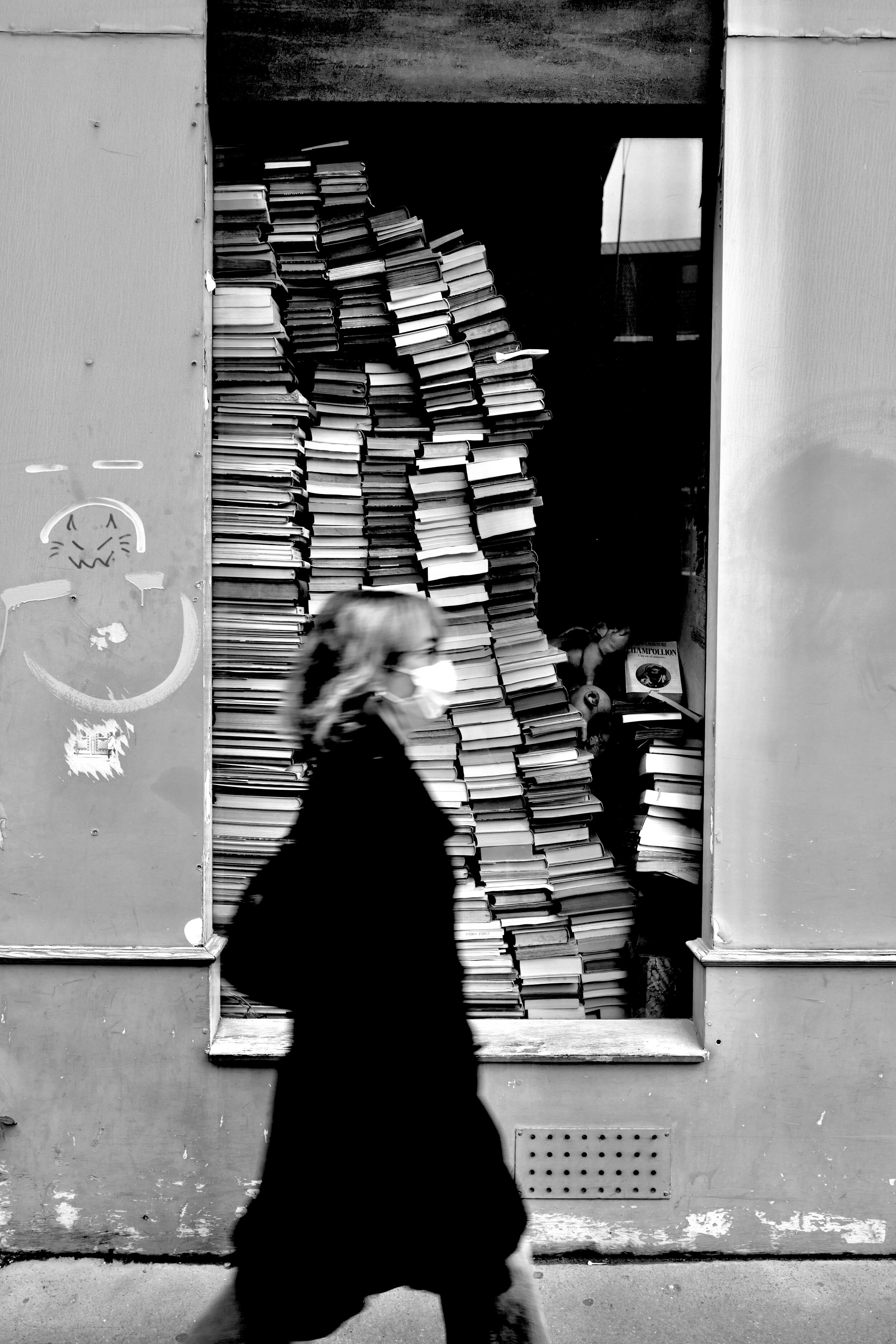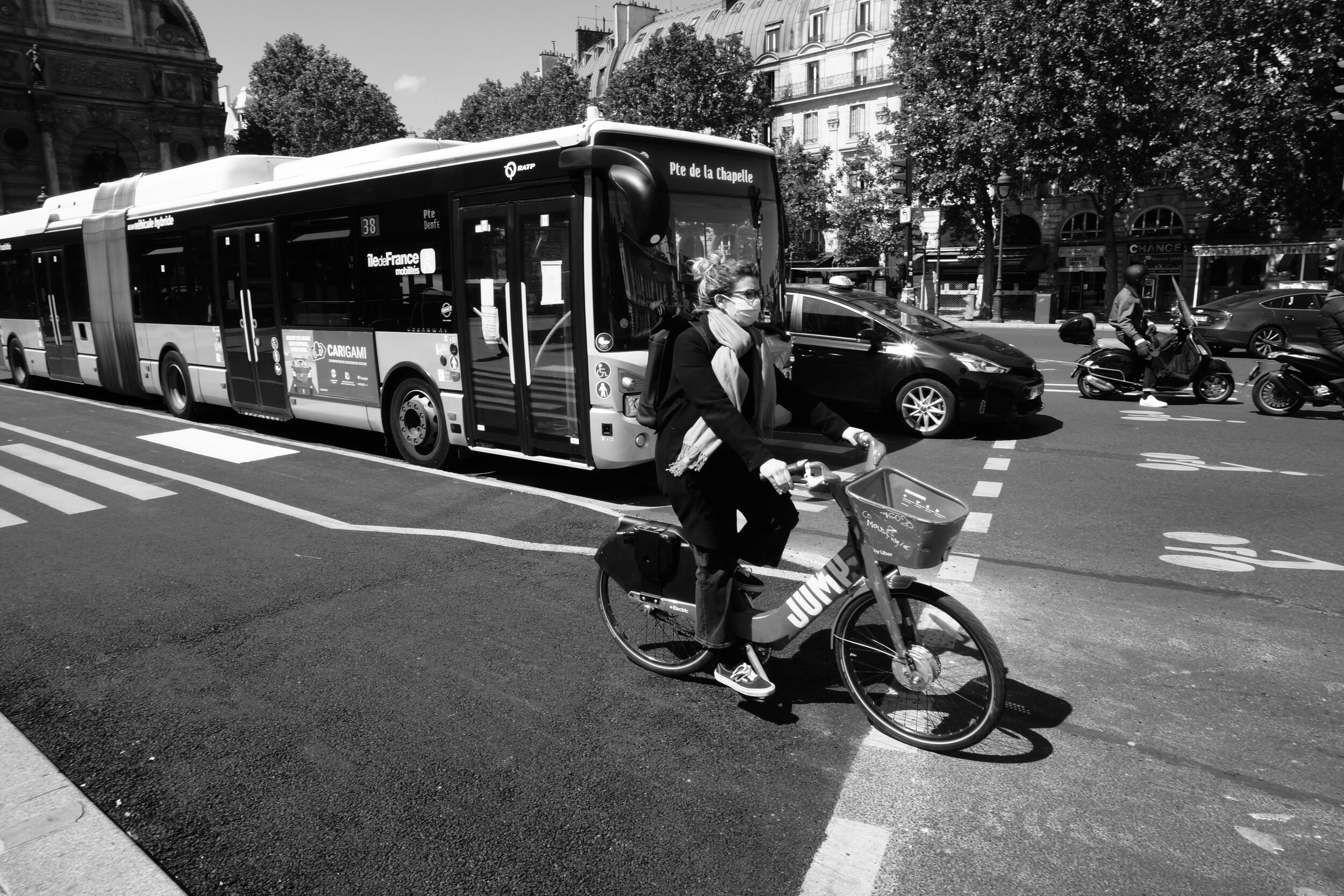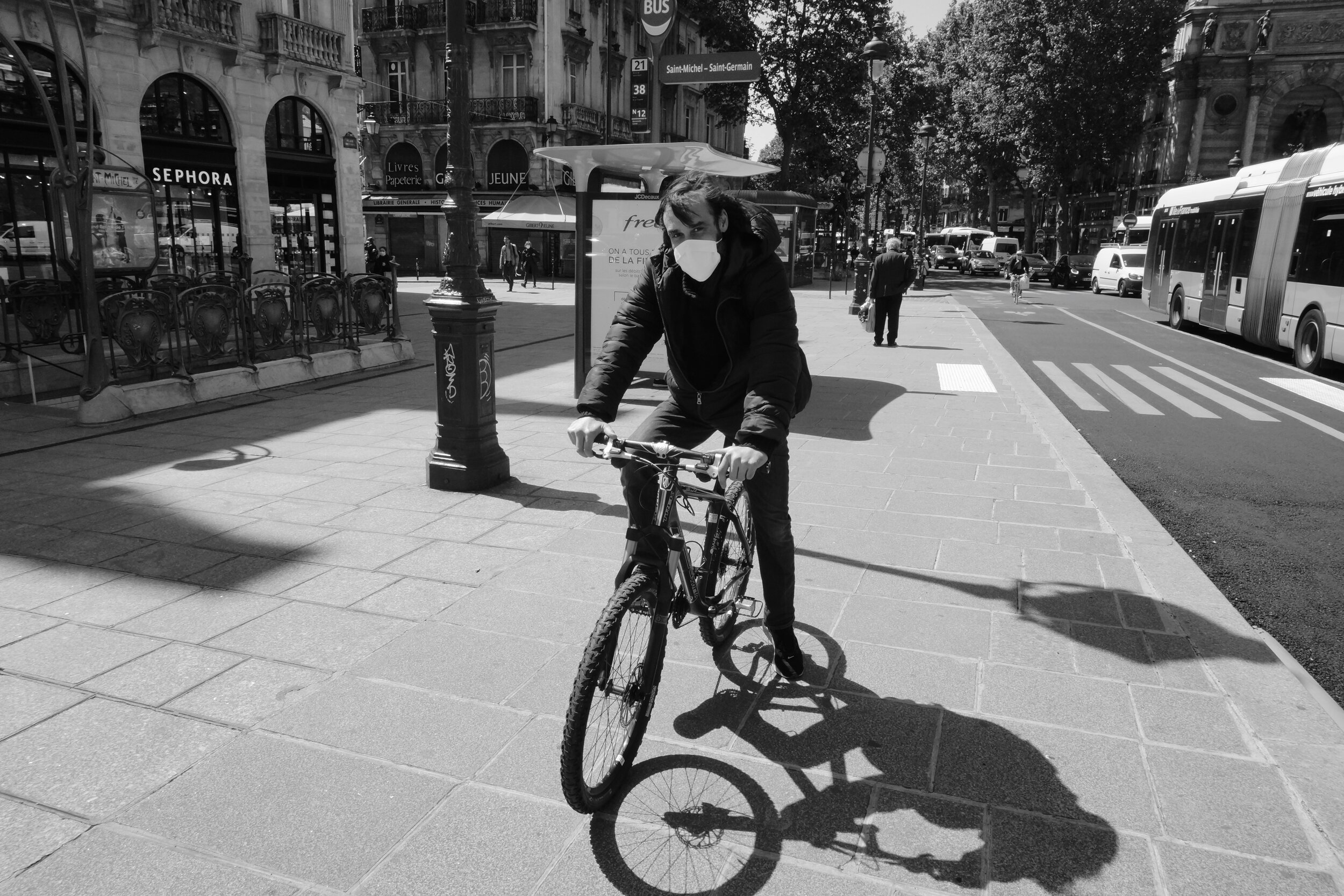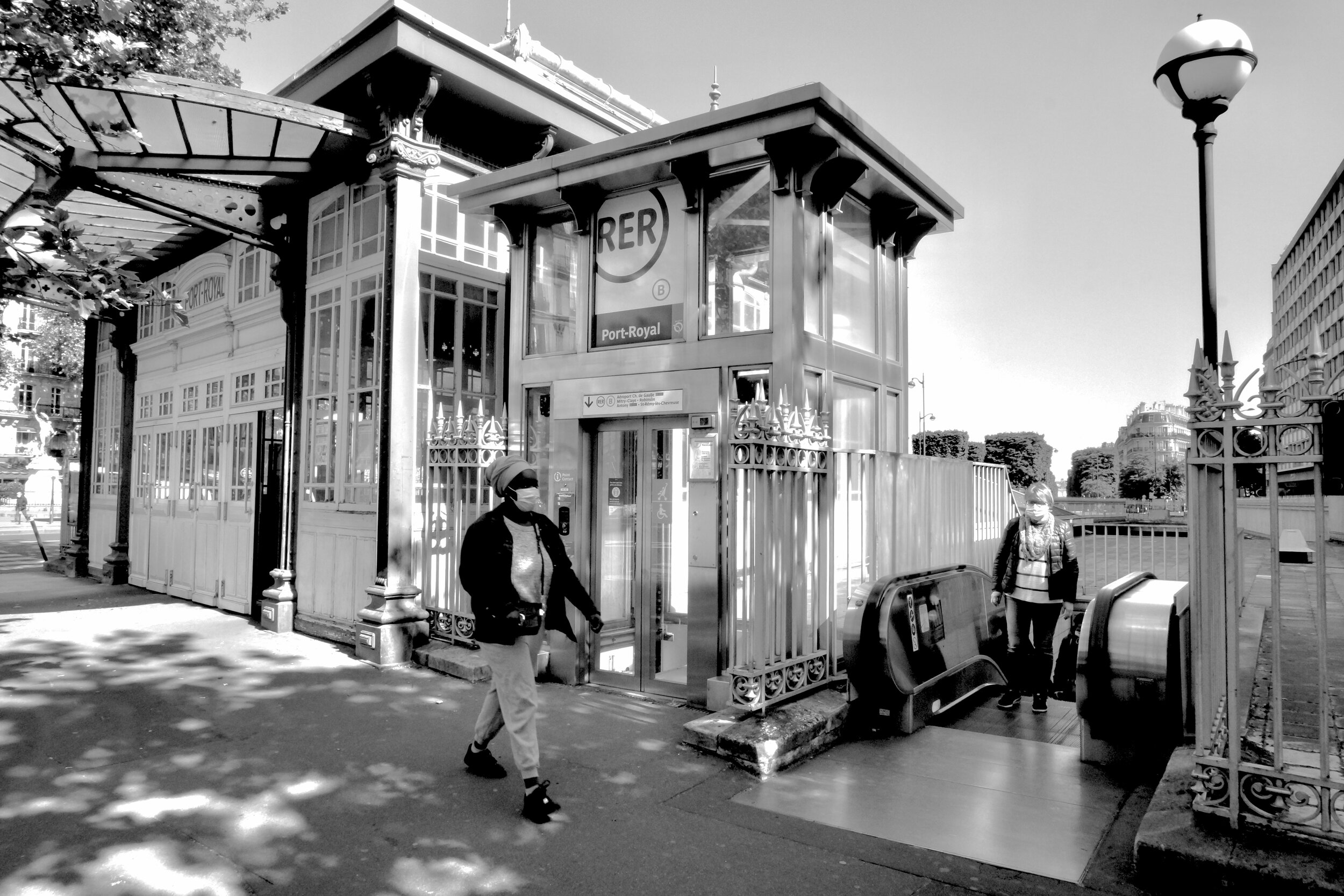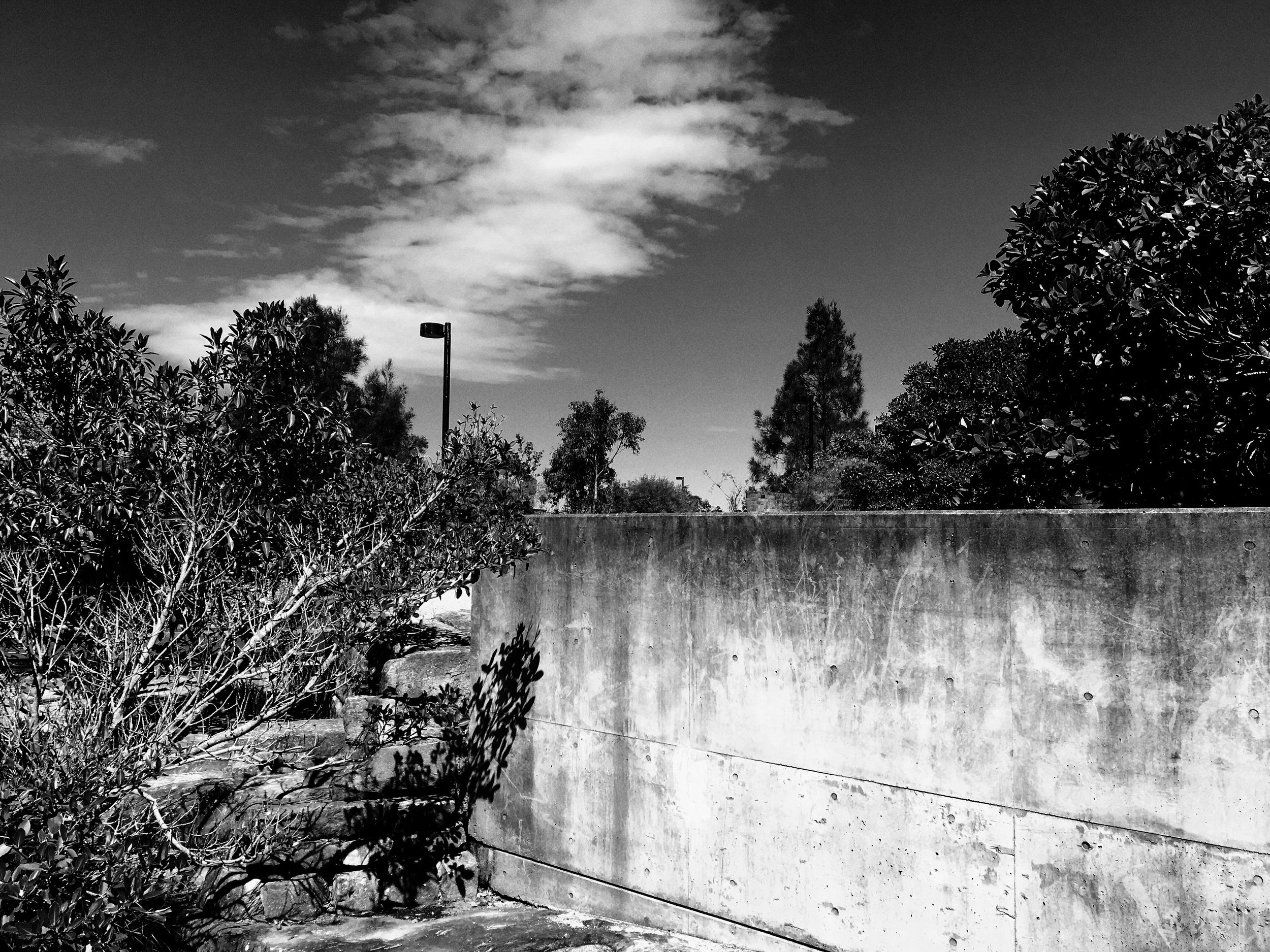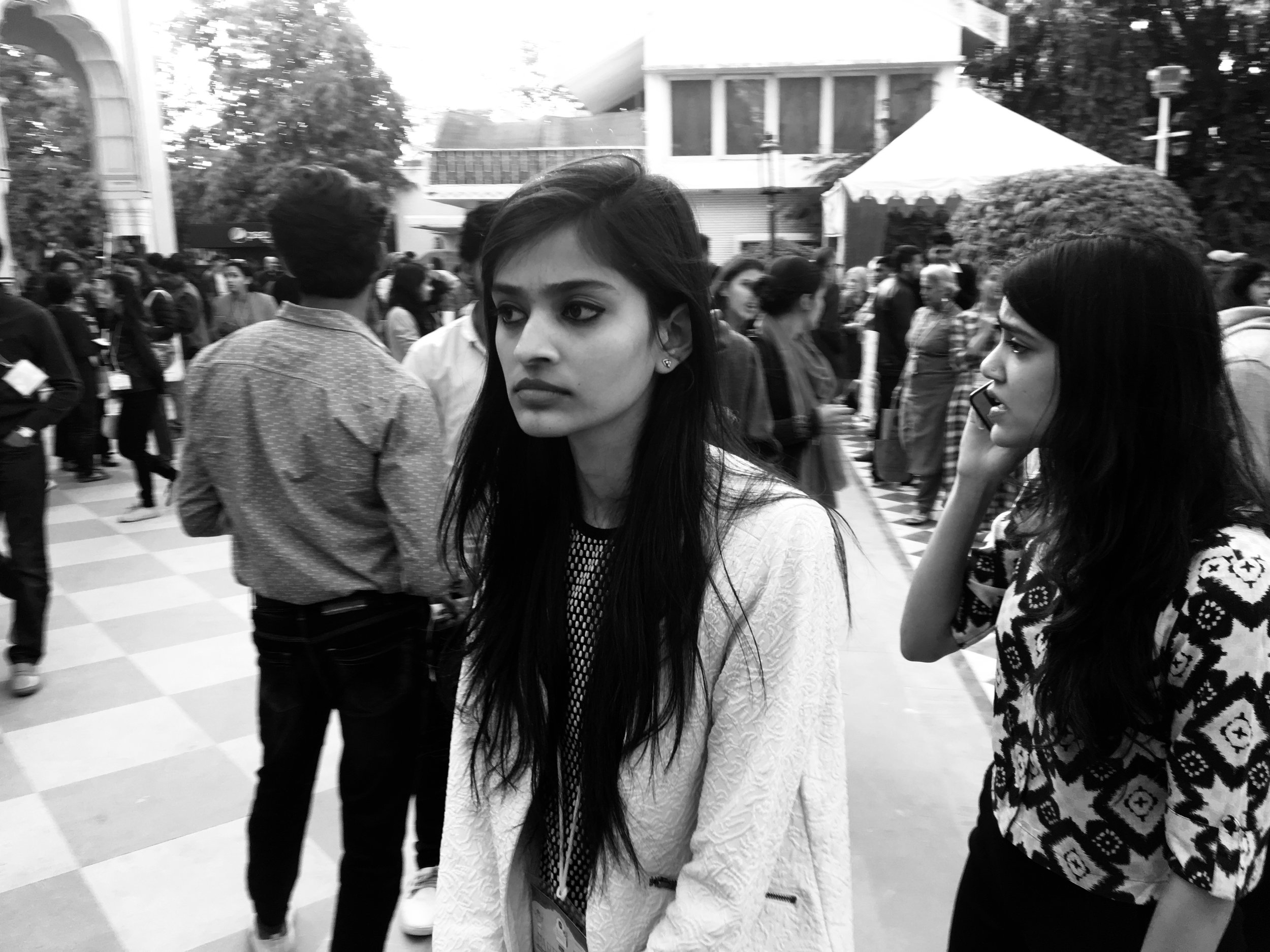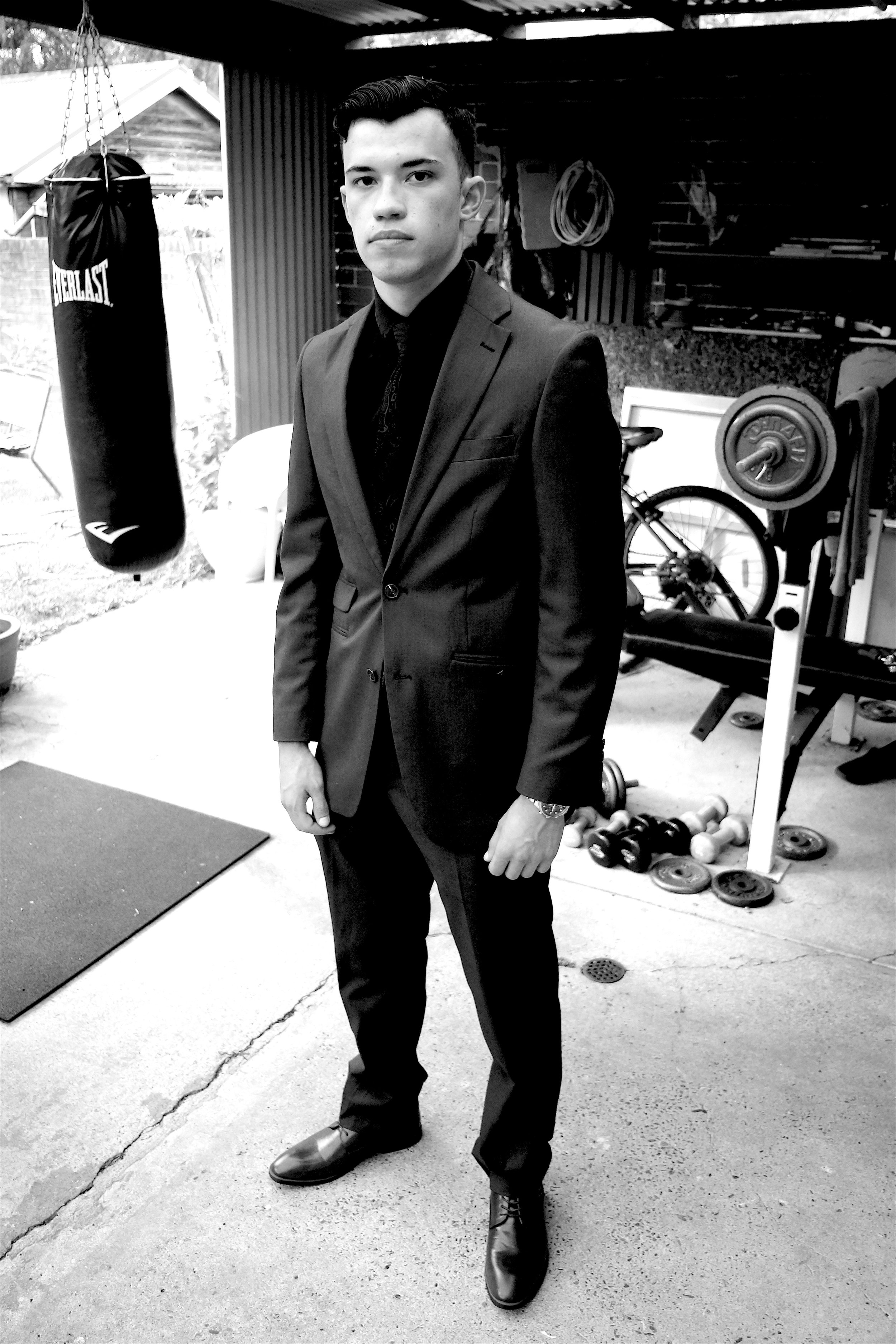PAPER MOON: IMAGES OF JAPAN
EXHIBITION 2025
My latest exhibition, ‘PAPER MOON: Images of Japan’, will be running through November 2025 in Sydney as part of this year’s Head On Photo Festival, Australia’s leading photography event. All my previous exhibitions I’ve managed alone, with stress - this time I’ve had the terrific pleasure of working with an experienced curator, Kathryn Hunyor, a specialist in all things Japanese, especially art.
Kathryn, who’s also the Head of International Tours at the Art Gallery of New South Wales, ploughed through nearly 1,000 images taken on my first visits to Japan, in 2024 and 2025, to select the 21 images featured in the show. Fortunately, her views and mine largely coincided (!) and the final result hangs against the historic brick and sandstone walls of the Kirribilli Neighbourhood Centre gallery, a building dating back to 1875-76 and owned by the North Sydney Council, a venue that really brings the monochrome prints to life. (Thanks here also to a key sponsor, PixelPerfect, Australia’s leading professional lab, for their outstanding attention to detail.)
What’s the show about? I’ll hand over to my curator, who had this to say:
“The captivating impossibility of truly understanding, clearly defining, and creatively portraying the country called ‘Japan’ sits at the heart of this exhibition. Tony Maniaty’s approach to photographing not the Japan we all assume to know, but simply 'his' Japan, results in these enigmatic images, many of which could, on first sight, be anywhere. He’s captured not clichéd vistas, but beautifully composed in-between spaces of anticipation, where the confluence of light, shade, and texture convey that very Japanese sense of mono-no-aware, a pathos of things.
These photographs are Tony Maniaty’s impressions of Japan, a country he'd never visited until 2024. Paper Moon therefore becomes a shared and contradictory space, featuring images taken by a first-time visitor (the artist) and selected by a long-time devotee (the curator). After a life of journalism, covering conflict, political, economic and social tensions, Maniaty found himself searching in the opposite direction, for love and beauty. In this singular endeavour, he surrendered to the 'unknowingness' of Japan while applying his distinctive view of the world, not as a reporter but as a humanist; a painter of light and shade.
For those of us flooded daily with ‘beautiful images of Japan’, these images offer an alternative. Although not always recognisable as Japan, they achieve something we are often striving for: a universal, shared moment in which to find ‘our’ Japan, and equally ourselves.”
In those words, Kathryn captured so well what I was trying to do.
It took me a long time, in fact nearly a lifetime, to get to Japan. And when I did, I went with no expectations at all. I walked through the doorway marked ‘Japan’ and followed my instincts, and I discovered a world like no other. I was searching not so much for a people, ‘the Japanese’, because I'd long rejected any catch-all idea of national labels. What I found instead was what this exhibition is really about: the sense of being who we are, and what we find of life, wherever we are.
[To purchase original prints from the ‘PAPER MOON’ exhibition, go to StudioTettix at www.studiotettix.com – and if you’d like to read a full interview about the show, visit Kathryn Hunyor’s site: https://www.artspeople.com.au/paper-moon-interview]
Tony Maniaty uses Leica cameras exclusively.
All images © Tony Maniaty / for full frame, click on any image.
THE PLANET OF POSSIBILITIES: EXHIBITION 2023
My latest exhibition, ‘The Planet of Possibilities’, featured at Sydney’s Kirribilli Centre Gallery in November/December 2023. Including work from my travels in Greece, Turkey, France, Britain and Australia over the past four years, the exhibition explored ideas of beauty and fragility in the chaotic world we now find ourselves in, and the need for heightened creativity in the face of mounting global problems - or, as one French critic wrote, “the razor’s edge on which we are all dancing these days…” The exhibition was a feature of this year’s Head On Photo Festival in Sydney.
Amid growing concerns about climate change and the environment, what value does art have, and why should we embrace it with passion?
In my view, art has the ability – by bringing together human imagination and intelligence – to create works able to reflect our human experience in new ways, to broaden our thinking about what life on Earth is and can still be. Creativity involves intuitive thinking and making choices from an array of possibilities. Photographs lead us to new ways of seeing, of understanding, and to fresh appreciations of beauty. I see this as photography’s gift to humanity.
I called this exhibition ‘The Planet of Possibilities’ because as a photographer and an individual, I seek out humanity, and I believe that, by appreciating not only the beauty of our planet but the miracle of our brief human existence on Earth, we might still deserve our place on this tiny speck of rock and water. I’ve tried to message these emotions in my images. Every day we become increasingly aware of how fragile this planet we live on, this Earth, really is. The more we see of beauty, the more we’re inclined to appreciate it, to revere it rather than damage it. We need to open our eyes to the beauty of the planet in order to save it.
To purchase prints from the exhibition, go to StudioTettix: https://studiotettix.com/
Tony Maniaty uses Leica cameras exclusively.
All images © Tony Maniaty / For full frame, click on any image
‘THE NEW ATHENIANS’: GREECE, 2022
The project: two months on the streets every day, in summer, shooting full-length portraits ‘in situ’ of a changing Greece – foreigners who’ve migrated, coping with relocation and a strange language, sending their kids to Greek schools; along with Greeks who often don’t conform to traditional visions of what the society should be. The focus is mostly on younger Athenians transforming the capital – beyond the financial crisis, Covid, and the flood of refugees. The changes are dramatic: a spirit of rejuvenation is lifting rundown areas out of malaise with new bars full of grunge, neon and disregard for convention. And always the graffiti, often tongue-in-cheek: ‘Berlin is the new Athens…’
What makes a ‘new Athenian’ in 2022? In a word, diversity. In the backstreets you’ll see Indian and Middle Eastern stores, many started by refugees, while Chinese unbundle huge cartons of imported clothes – bound not only for Greece but all of Europe – and street vendors from Nigeria and Somalia and Pakistan and Sri Lanka sell everything from shoes to watermelons to kids’ balloons. You’ll hear them speaking not only Greek but Mandarin, Hindi, Tamil and Arabic. Humanity on full display. There’s always something if you keep your radar on…
Athens isn’t a pretty city. Sidewalks are broken, buildings are half-finished (the money ran out) or need total renovation, pedestrians and cars compete lethally. But it remains an amazing, sprawling metropolis of three-million, the classical past at every turn and side-streets filled with exotic flavours and new arrivals. People make a city, and Athens is alive with humanity. What more could a photographer ask for?
Now begins the task of editing the work – 150 portraits – down to exhibition/book dimensions, finding a publisher and a gallery. It’s been an illuminating journey, meeting people with so many backgrounds and stories to tell. To all who were happy to pose, and to Athens itself, my thanks.
Ancient or this century, it’s still one of the great cities of the world…
Tony Maniaty uses Leica cameras exclusively.
All images © Tony Maniaty / For full frame, click on any image
‘OUR HEARTS ARE STILL OPEN’: PARIS PHOTO/REPORTAGE
As with almost everyone else on Earth, my 2020 didn’t go to plan.
I flew from Australia to Paris in early January, just as coronavirus was taking off in Europe - first in Italy, then France and the rest of the Continent. After long confinement in a Provençal village, I rented a small apartment on the Paris Left Bank, only to face successive waves of the virus and a rising death toll. My creative focus shifted from the relative isolation of writing to a more confronting engagement with Covid-19 - heading out every day and night to photograph the changing life of the streets, sans tourist crowds, sans traffic, everyone wearing masks and sanitizing hands, a pervading sense of anxiety replacing the joie de vivre of the city.
Paris as none of us had ever seen it before.
What follows is a gallery of those moments of 2020, interspersed with notes I made as Covid took hold. In many ways, 2020 was a lost year, in which our hopes and dreams were suspended or abandoned altogether. But Paris gave me back a love of photography: the combination of Paris, the crisis and the camera seemed to open new creative horizons. Technically too, the year reinvigorated my street photography skills: patience and seeing things ‘about to happen’, intuitive framing and composition, the interplay of light and shadows in monochrome.
An exhibition of my Paris photographs in November/December 2021 at the Kirribilli Centre gallery was part of Sydney’s Head On Photo Festival and, at the Alliance Francaise de Sydney, my show ‘Amour Toujours’ ran through April/May 2022. The photobook ‘Our Hearts Are Still Open’, with 64 images from Paris, is available for purchase from StudioTettix, as are prints of all the images here.
Tony Maniaty uses Leica cameras exclusively.
Coronavirus. The word itself came out of nowhere, and changed everything.
The big one, cataclysmic, unavoidable. Paris has been hit hard, a great city turned Covid-19 global hotspot.
We stay inside at first because the government insists, and then because we’re afraid to go out. The longer we stay inside, the more TV reports we watch of people dying and the more we stay inside. Learning to wash our hands, like children.
Days dissolve into nights, until only one question remains: what will the future be like?
Confronted with a rising death toll, Paris is devoid of the usual clichés.
The romance of lovers on the Pont Neuf, the creative sufferings of so many Hemingways holed up in windy attics, those Left Bank debates clouded in Galouises smoke, old Resistance fighters in cloth caps riding black bicycles and clutching a baguette, husky-voiced old actresses recalling the French New Wave? Nowhere to be seen, not even the cinemas are open.
The City of Light is one more metropolis filled with victims of Covid, like London, New York, Madrid, Moscow.
But the cliches are replaced by something greater: shared humanity. Every night at eight, Parisians on their balconies clap in support of the nation’s health workers. The French are embracing the struggle as if they own it, and for once politics takes a back seat. Covid is the new enemy, requiring a common front against a common foe. Or is that just another cliche?
Everywhere, too, the regulations are being broken.
Medical staff in major hospitals are doing double shifts, sleeping where they work.
On TV a doctor says, we’re finding resilience that we couldn’t imagine a week ago, we’re suffering across borders. Coffins are being transported to other cities because local crematoria can’t handle the overload of deaths.
A ridiculous parade of death, a dark comedy. In each coffin is one of us.
A time for love, constancy, reflection.
Love is not complicated, the Parisienne says, it’s a process of conditioning.
That’s why you can grow to love someone over time, and also why you can love and hate them at the same time.
But love and desire are quite different. You cannot condition your desires, you can only follow them.
Desires are far more complicated than love.
On CNN, an actor says we need to remember normalcy. And part of normalcy is theatre and the arts.
An optimist, he says this crisis will pass. ‘I don’t know when, but it will pass.’ He struggles to explain what he means. The interviewer helps out: Shakespeare was said to have written ‘King Lear’ while he was in quarantine, will we see a surge in creativity from this?
Oh yes, he says, it’s a terrible thing to say but out of this will come great good.
I realize nobody has a clue what they’re talking about.
Every morning I wake up and, for a second or two, forget what’s happening, how the world is falling apart.
Then it hits me and I know the news today will be bad, probably worse. Hundreds more deaths. That’s how it was at the start of all this, anyway. Now I wake up in the night and think instantly of the crisis, and by the time I finally wake and get out of bed, I’ve spent the whole night worrying about the crisis. I mean about my family and friends in the crisis. About the crisis itself, there’s very little I can do.
I’m a capable person left incapable, waiting.
‘I do think, looking at it, that we can conquer this in twelve weeks and send the coronavirus packing.’
On the BBC TV, Boris Johnson thumps his fist, trying to convince not only the British nation but himself. The French think he’s crazy. Nobody has a clue when this crisis will end, so why lie? That was barely a week ago, now Johnson’s attempts at conquering the virus and the truth have failed miserably. He’s tested positive and is running the country from his bedroom, eating meals left at the door.
A day or two later he’s in intensive care, struggling to survive.
Send it packing, Boris? Mais non.
I wash my clothes and feel, when they’re dry, the heat they’ve absorbed on the balcony.
I keep telling myself to act responsibly, to do the right thing, but I’m allowing myself odd pleasures.
A taste of the sun’s warmth, because summer is rapidly disappearing.
A pediatrician on French TV suggests kids are less likely to catch the coronavirus.
The interviewer asks, but is it possible they could be spreading the virus without knowing it? Well, we just don’t know.
She’s followed by a man said to be an American stock market expert who wonders why the hell we’ve shut down the world’s biggest economy after only one-hundred-and-fifty deaths. He’s wearing a jacket that resembles a black-and-white cow, with a bow tie and white-framed glasses. He complains America has gone, as he puts it, from the side of caution to the side of losses. We need to let the virus abate, then come in with the economic cavalry. He’s worked it all out.
He doesn’t explain how the virus will abate by itself.
You know what I do for a living, the Parisienne says.
What I really do is destroy the clichés people have about themselves.
Wearing clichés all day makes people very unhappy, especially in a crisis.
It’s better that they are going around nude, and happy.
Now that the streets at night are quiet, the nearby church bell sounds louder.
The hours pass, the bell rings then stops. An entire day passes and another thousand lives in France have gone.
The clock spares nobody. Time is being consumed by the coronavirus, swallowing whole days.
Somehow, we will get through this.
A PARIS SPRING LIKE NO OTHER
Emerging in May 2020 from a two-month Covid shutdown, Parisians flowed into streets and parks for some sunshine. A second wave of coronavirus after the summer would see them again confined to their apartments. Taking life as it comes…
All images © Tony Maniaty / For full frame, click on any image
THE RED CENTRE, WITHOUT THE RED
Until the middle of the last century, nearly all photographs of nature were published in monochrome: at the higher end of the scale, the awe-inspiring vistas of Ansel Adams, and, at the lower end, general ‘souvenir’ books of travel locations. The spread of inexpensive, high-quality color printing in the 1960s (think National Geographic magazine) changed the way we envisaged the world around us - less to do with the primacy of natural forms, and more with the vibrancy of nature’s spectrums. On a trip to the very centre of Australia, around the great rock Uluru and the MacDonnell Ranges, I returned to ‘black-and-white’ as it used to be called and re-discovered its value in capturing the natural environment. (Of course it suits the gritty nature of urban life, but the grit of the Australian Outback is something altogether different.) When I first started publishing these images on social media, I was intrigued by the positive reaction, until I realized that many had probably never seen the so-called ‘Red Centre’ - the heartbeat of this vast continent - portrayed without color, and with such starkness. It’s a landscape of extraordinary beauty and spirituality, and for eons the home of proud indigenous peoples.
All images © Tony Maniaty / For full frame, click on any image
URBAN RENEWAL: RUST NEVER SLEEPS
Sometimes urban renewal planners get things right. New York’s High Line, Beijing’s 798 Art Zone, Liverpool’s Albert Dock. Add to that Ballast Point Park on the foreshores of Sydney Harbour. On a weekend visit to what used to be the Caltex oil storage depot, I was struck by the raw beauty of this former industrial site, located a few kilometres from the Sydney CBD – a beauty enhanced by retention of much of the site’s rusting commercial history. Not everyone agrees: former Australian Prime Minister Paul Keating was among those arguing for erasure of this ‘industrial vandalism’ and a return to the site’s ‘pre-European-settlement’ natural state. But sanitation of history isn’t the answer; recognition of the past and its truths (good and bad) has to be an integral part of renewal projects like Ballast Point. This time they got it right.
All images © Tony Maniaty / For full frame, click on any image
ATHENS UNDERGROUND: ANCIENT CITY, MODERN METRO
Is there a sub-set of street photography called ‘metrography’? The world of subterranean railways is a great locale for people watching, with a compressed and distracted humanity in peak hours hurrying to get from one place to another. At other times, metro stations are eerily quiet, filled with a sense of uncertainty (‘When’s the next train coming?’) and anxiety (‘Why is he taking my photograph?’). Without the griminess of many undergrounds, the Athens system, built for the 2004 Olympics and cloaked in endless marble, is efficient and clean, generating its own sleek look for the camera…
All images © Tony Maniaty / For full frame, click on any image
JAIPUR: 'THE PINK CITY' IN BLACK AND WHITE
Shooting spontaneously, I tend to favor black-and-white. For years I shot in monochrome Kodak Tri-X, considered de rigueur for street photography with a Leica. Then I switched to a Nikon F system and Ektachrome color film for a decade or so. Now I'm using a Sony Nex-7 digital body with Nikon prime lenses, and an iPhone 6S - fluctuating between both and between colour and monochrome. Covering this year's Jaipur Literary Festival, I used the iPhone in 'noir' mode, capturing the mood and faces of the young Indian crowd. The iPhone is ideal for getting right into the action - without seeming to be anything but another festival-goer...
All images © Tony Maniaty / For full frame, click on any image
ATHENS: THE BEAUTIFUL, DIFFICULT CITY
'Wherever I go, Greece hurts me,' wrote the poet George Seferis. I feel this same conflict whenever I return to my father's homeland. It seems Greece can never escape its destiny, of being beautiful and tragic at once. Nowhere is this more apparent than in the capital itself; in the early summer of 2017, Athens conveyed a sense of both falling apart and coming alive. The graffiti everywhere shouted anger at the endless financial crisis, while the streets and cafes were filled with entrepreneurial young Greeks determined to make a fresh start from a decade of despair. Roaming about the city, using only the iPhone, I experienced the same buzz at photographing its many facets and faces as I did on my first visit as a teenager.
All images © Tony Maniaty / For full frame, click on any image
'VERTICALS': MONOCHROME PORTRAITS
In 2016, I embarked on a long-term project to photograph friends, family and acquaintances in the creative sphere. I'm shooting in monochrome, vertical format, full body and full frame, as much for insights into the persona of the subjects as for visual impact. Two of my 'sitters' were Americans who settled in Australia - Sydney sculptor Tom Arthur, from the East Coast, whom I first met in 1982, and Adelaide image maker Ed Douglas, from the West Coast, my photography mentor. These images were taken with a range of Sony and Leica cameras.
All images © Tony Maniaty / For full frame, click on any image
MOSCOW STAIRS
In the Khrushchev era, from the mid-Fifties to early Sixties, Moscow experienced a postwar building boom of standardised workers' apartments, know even today as 'Khruschovka' blocks - rapid reinforced-concrete construction, five stories high, with modules of 20 apartments (four per floor) that could be multiplied to create entire new neighbourhoods. Progressively these Khruschovka blocks are disappearing, replaced by tower blocks 20 or 30 stories high. The stairwell of this block, in the south-western Zyuzino district, had just received a fresh coat of near-luminous green paint when I arrived. The afternoon winter sun coming through the windows did the rest...
All images © Tony Maniaty / For full frame, click on any image
THESE KINSHIPS STRONG
The remaining marine and timber yards dotted around Sydney Harbour face an uncertain future as property developers move in. The workers talk of fighting back, but their days are numbered. When they go, two centuries of waterfront tradition will go with them, along with their working-class spirit. I took these images on assignment for a Magnum photojournalism workshop I attended in Sydney with veteran Magnum Agency photographer Ian Berry.
All images © Tony Maniaty / For full frame, click on any image

